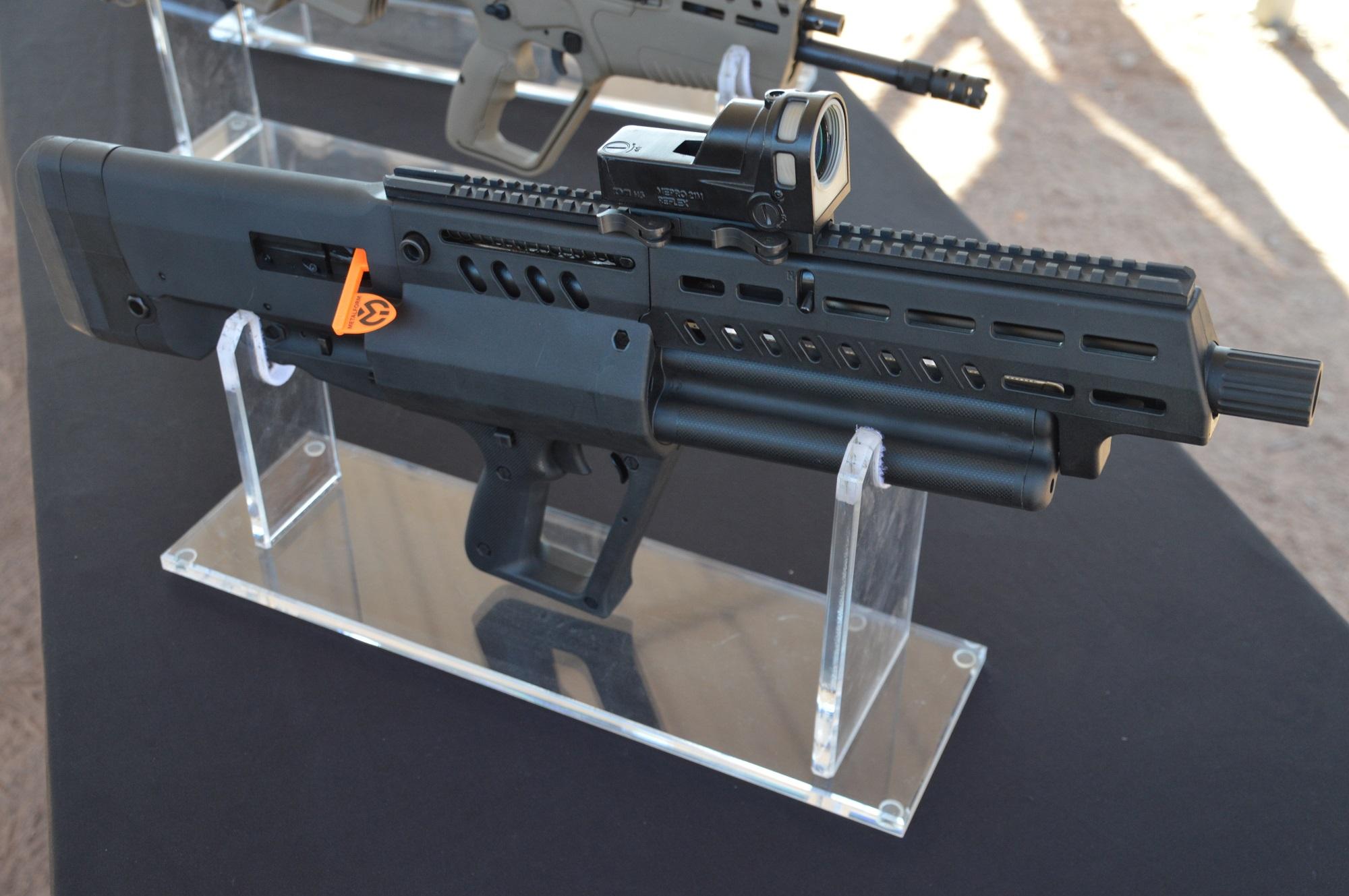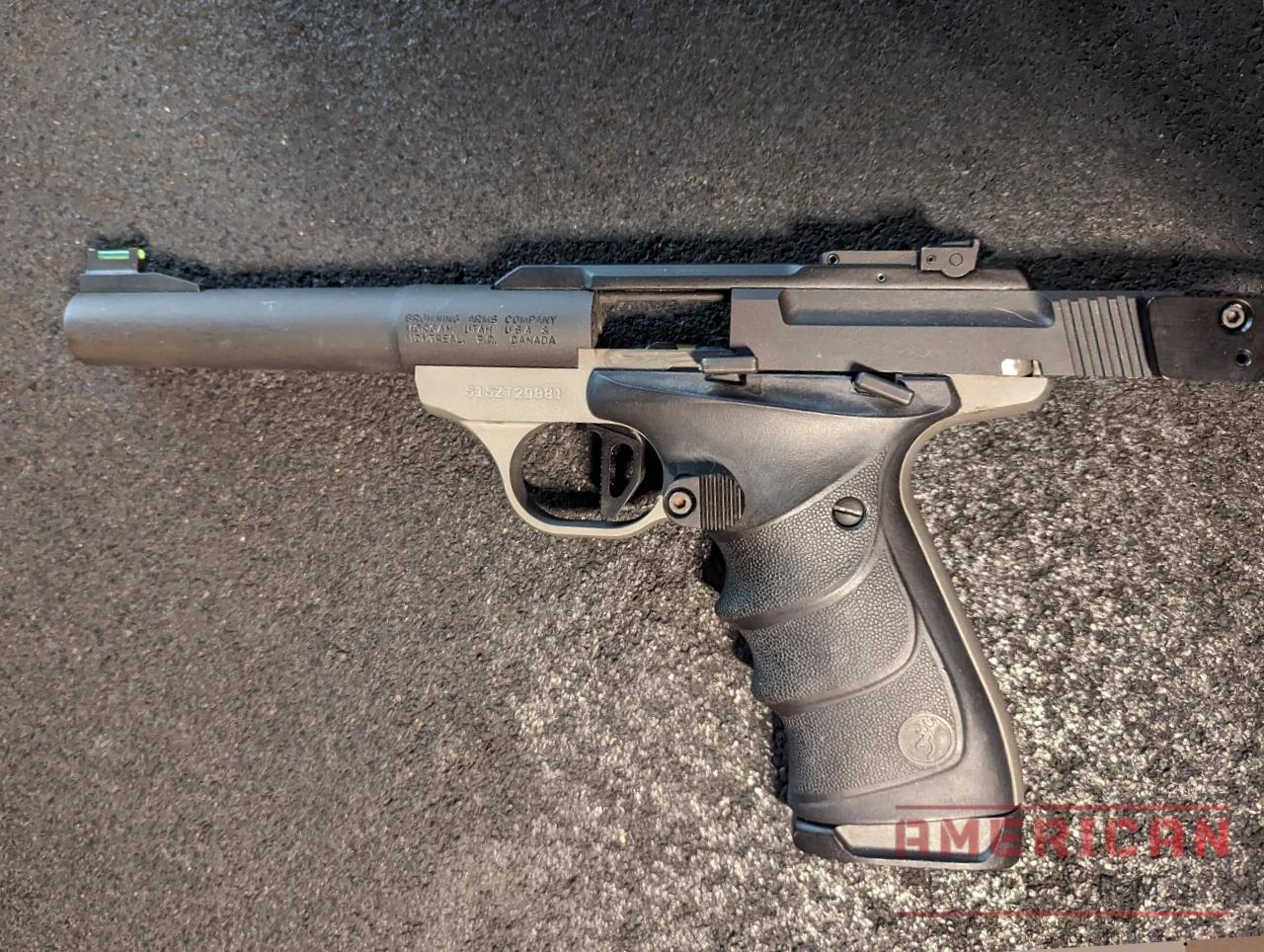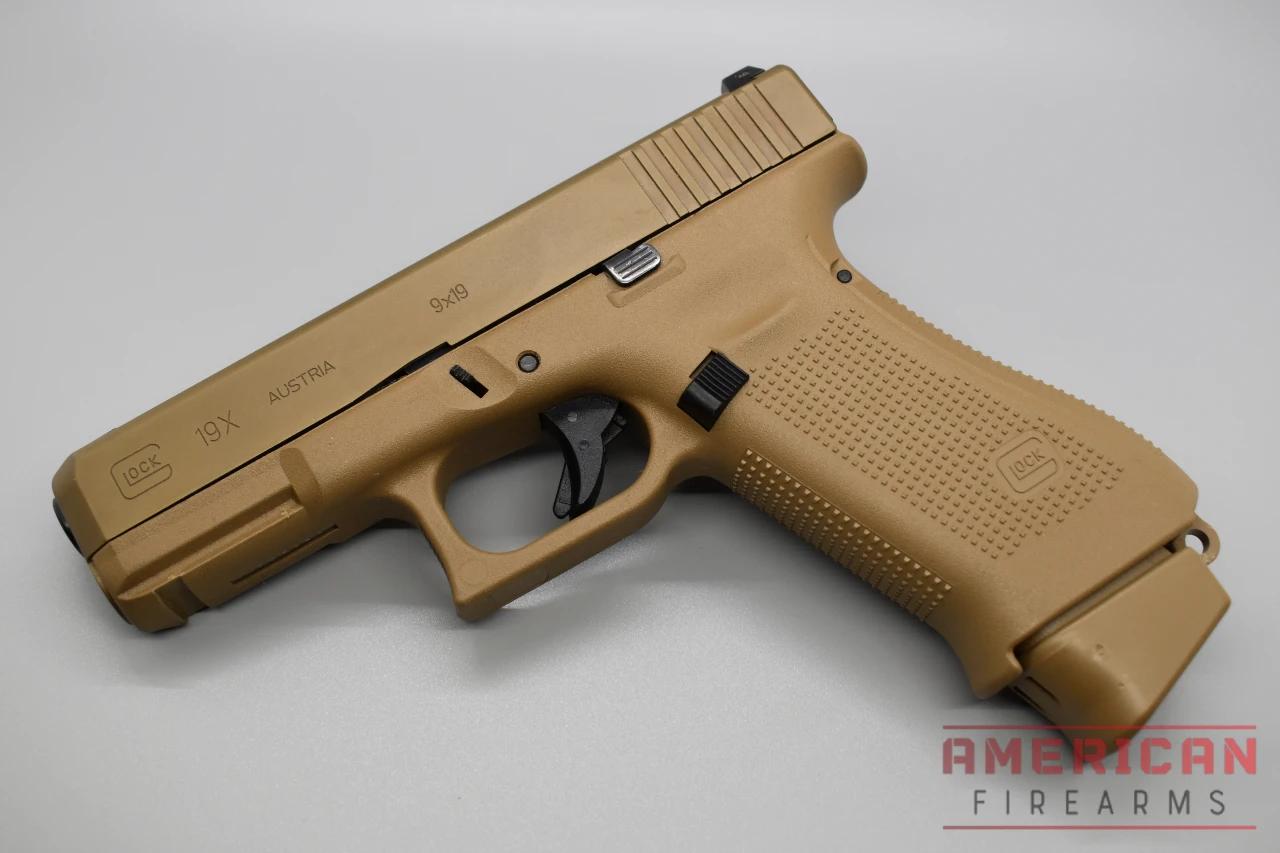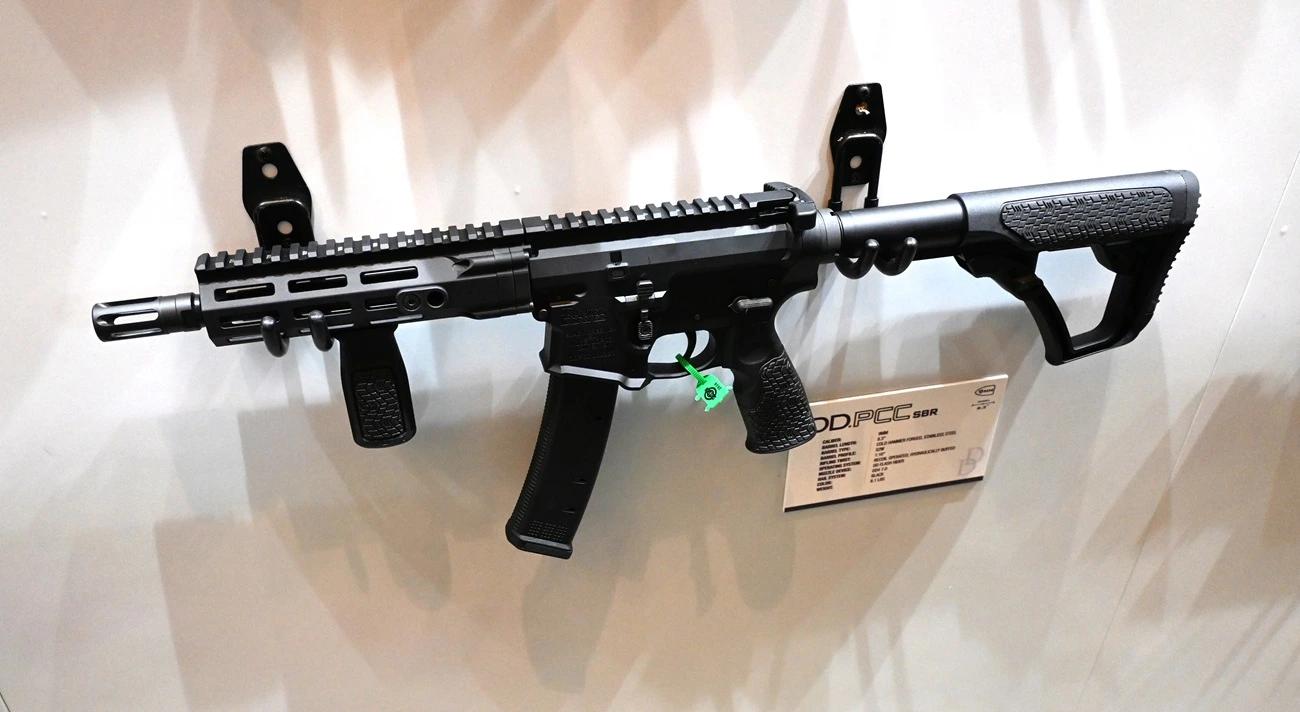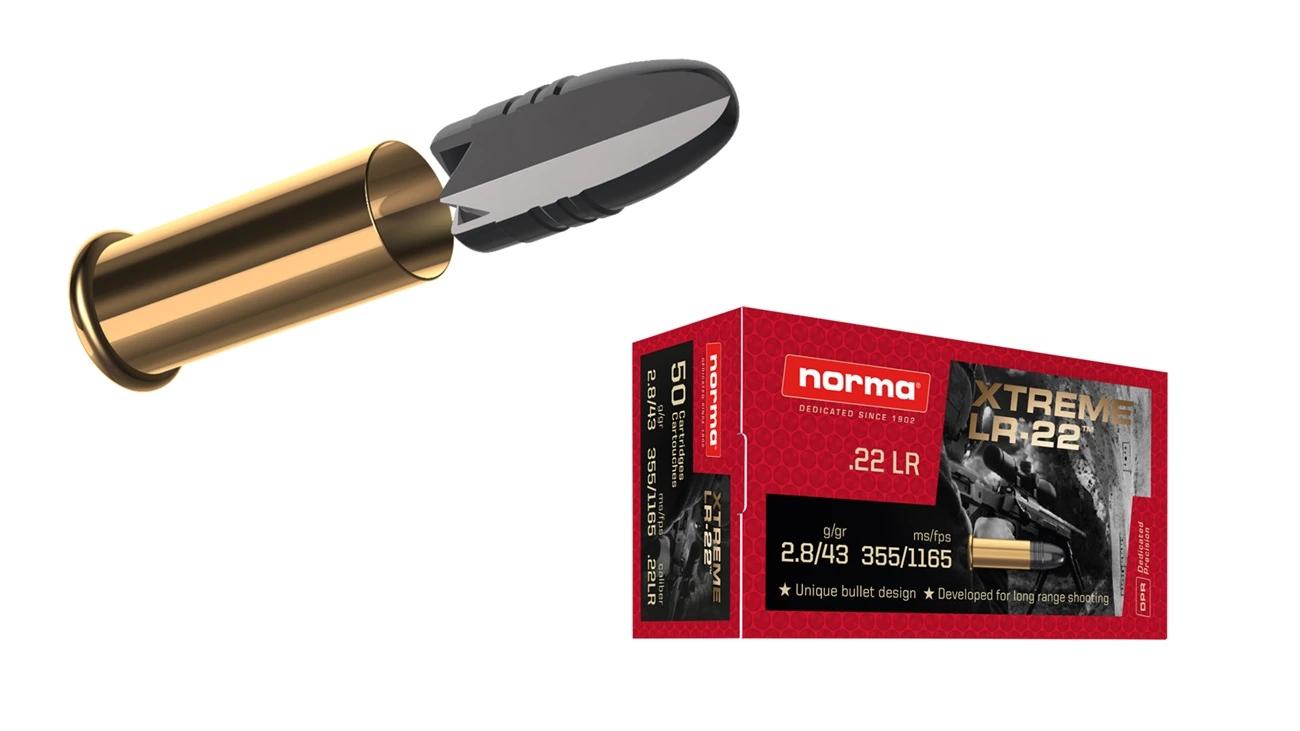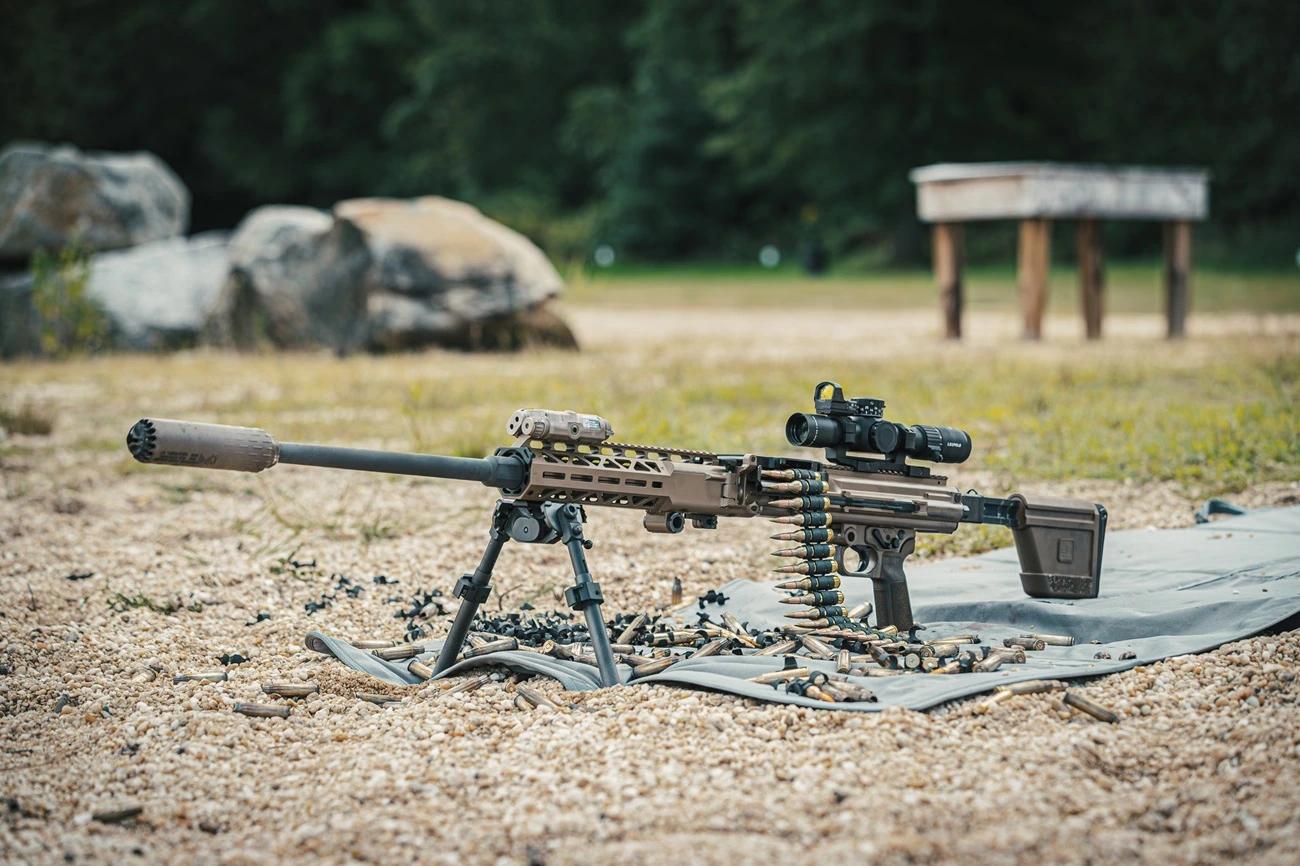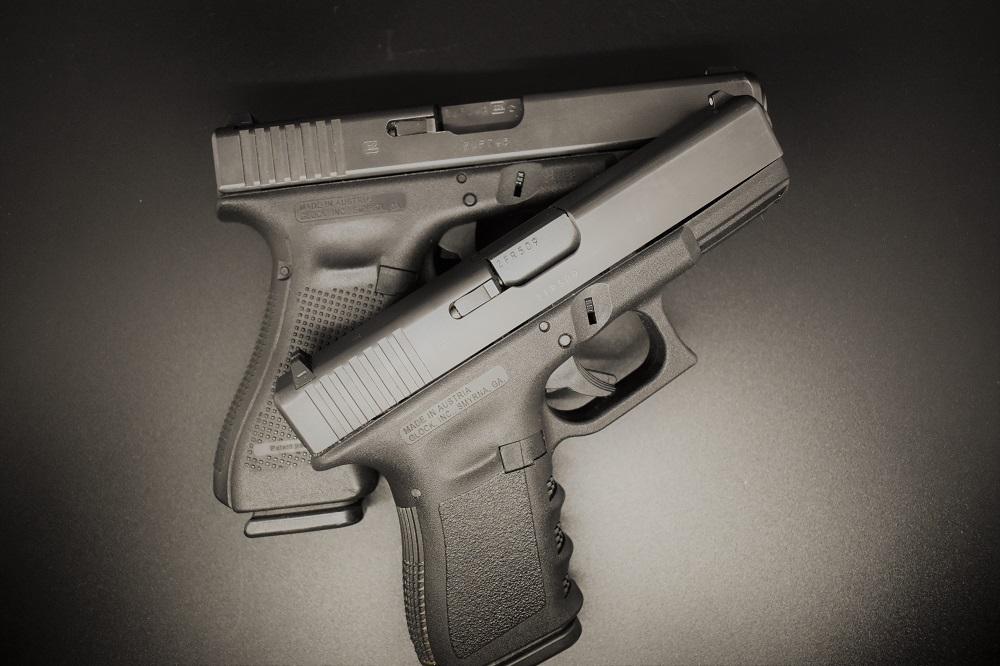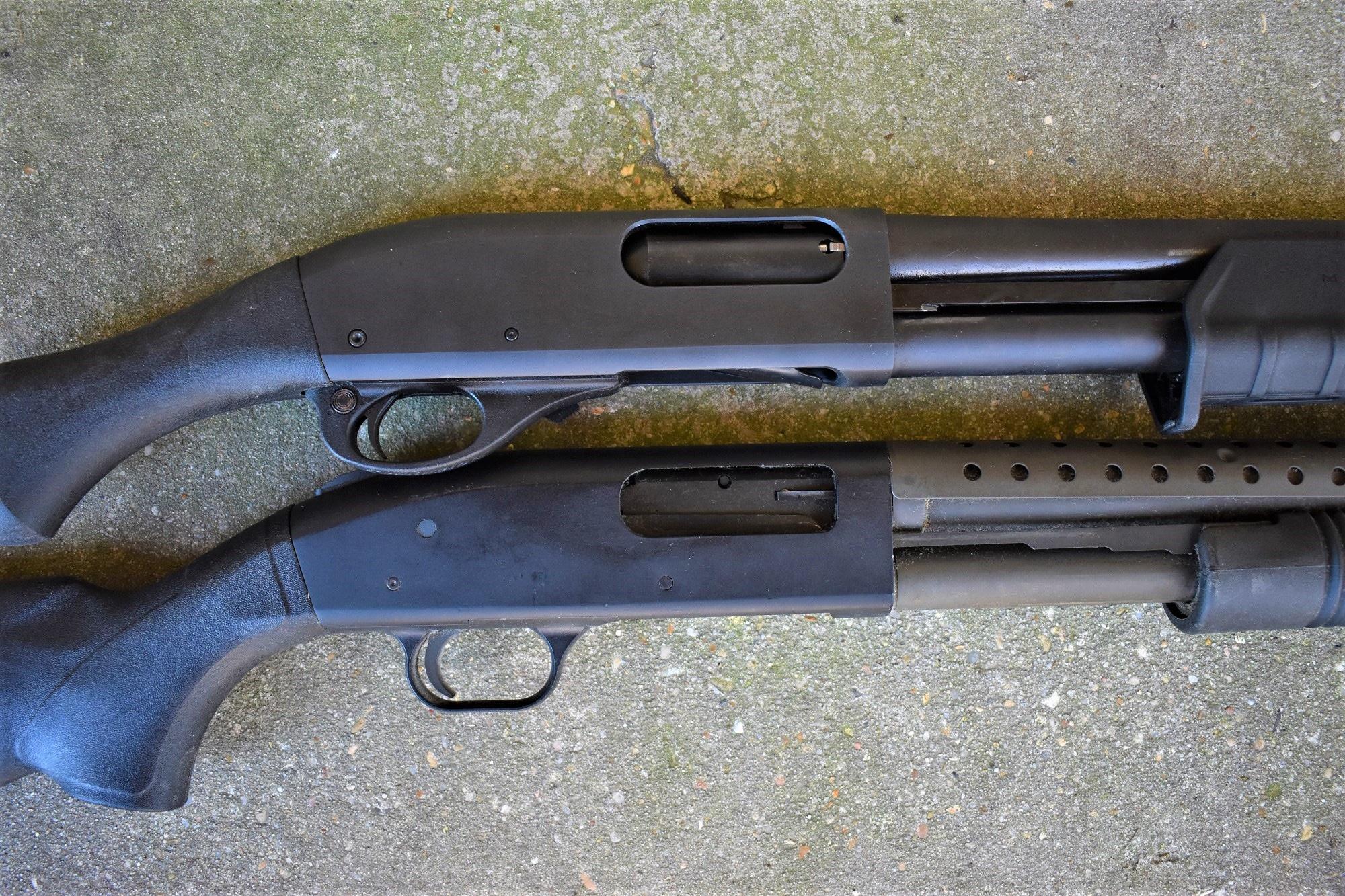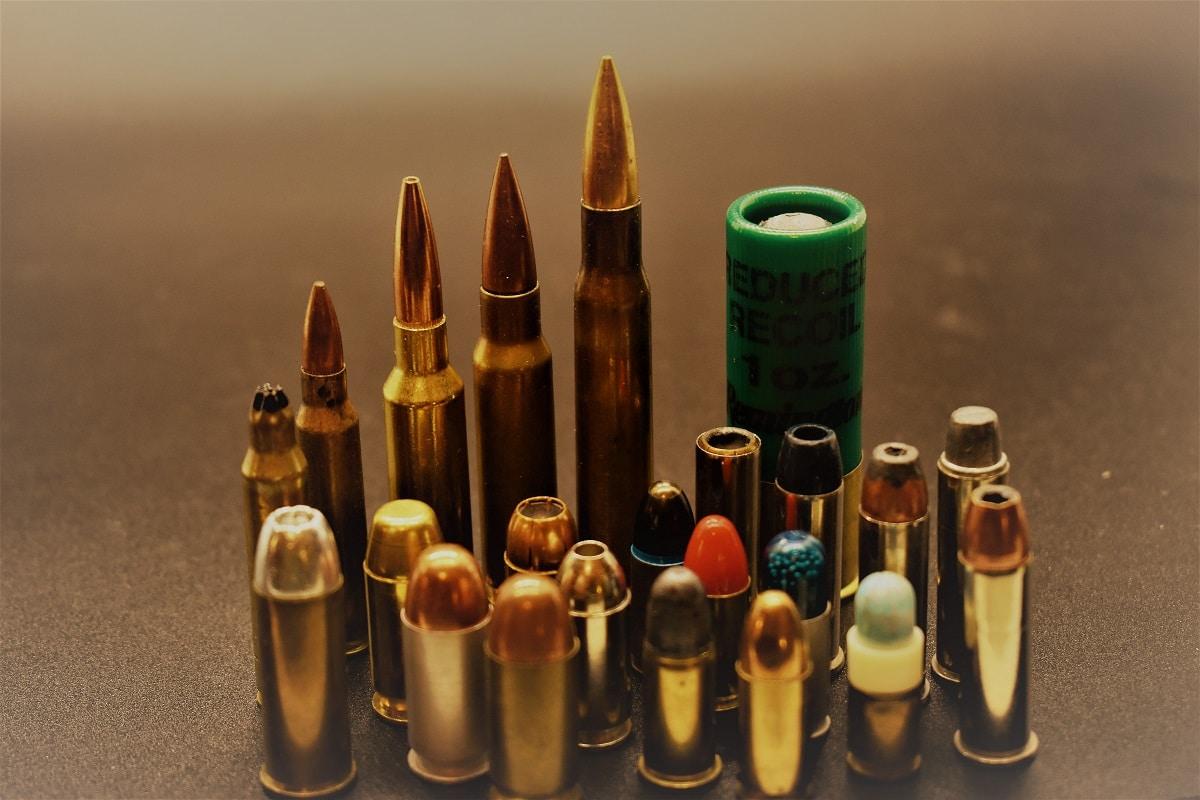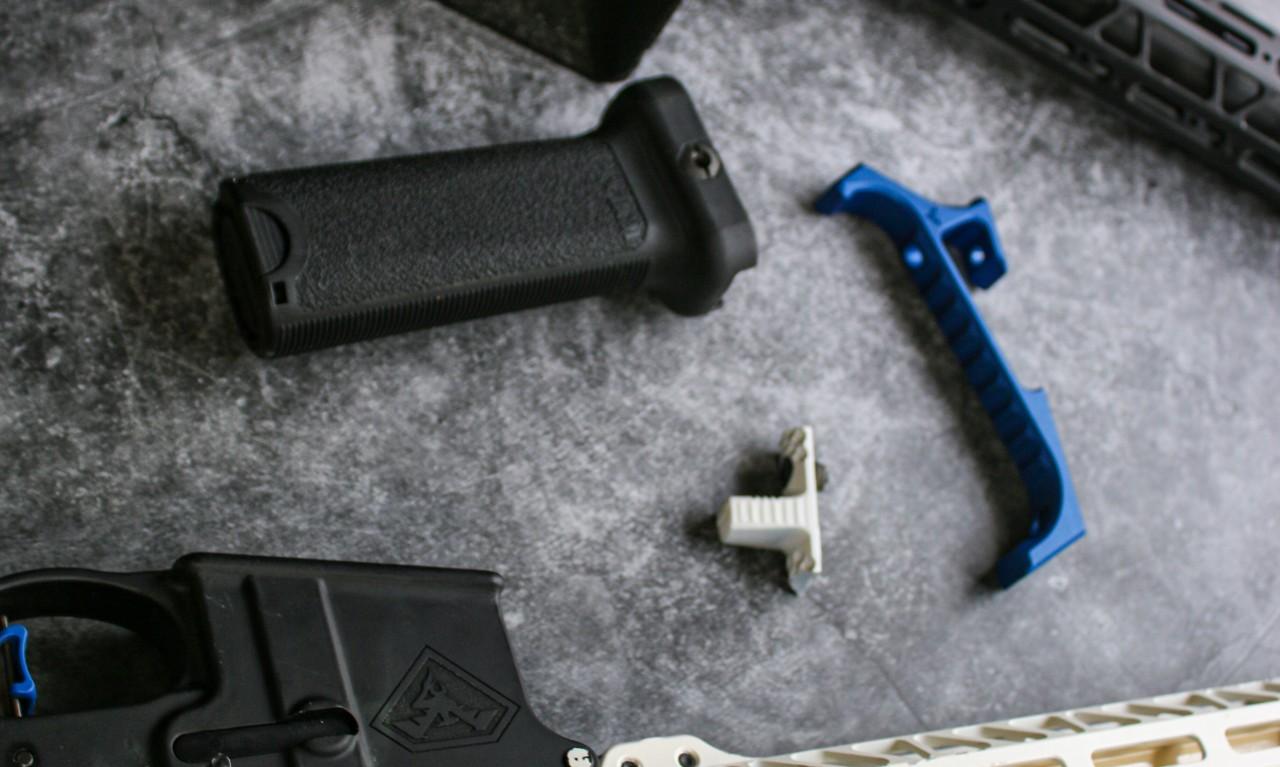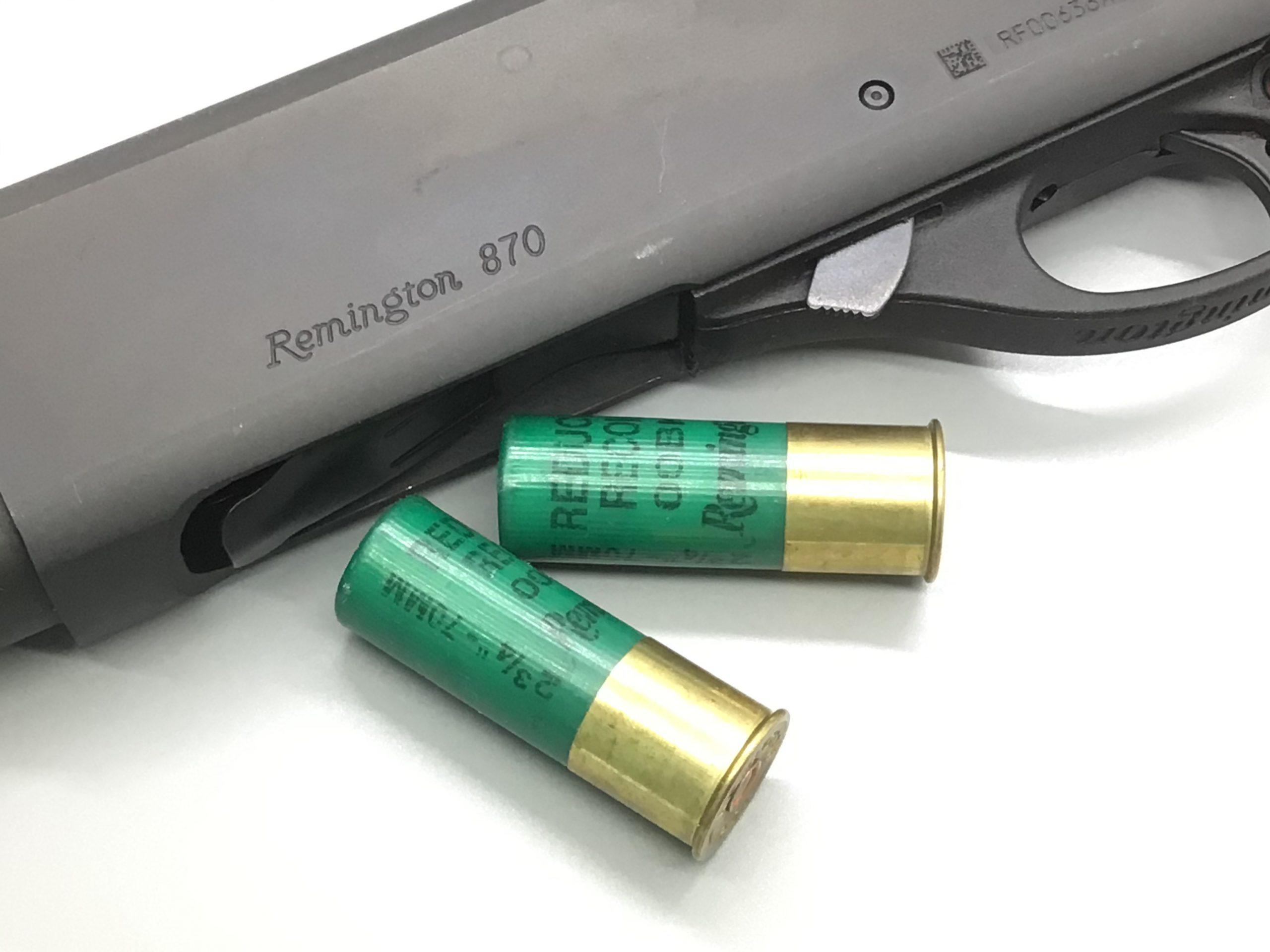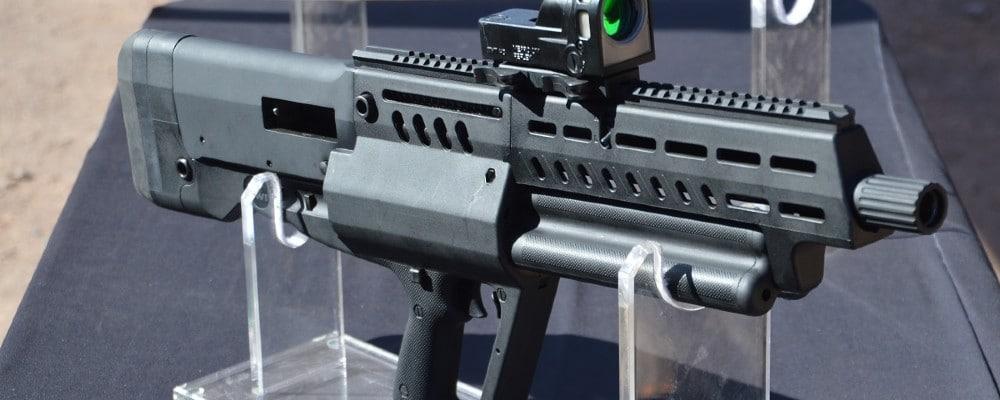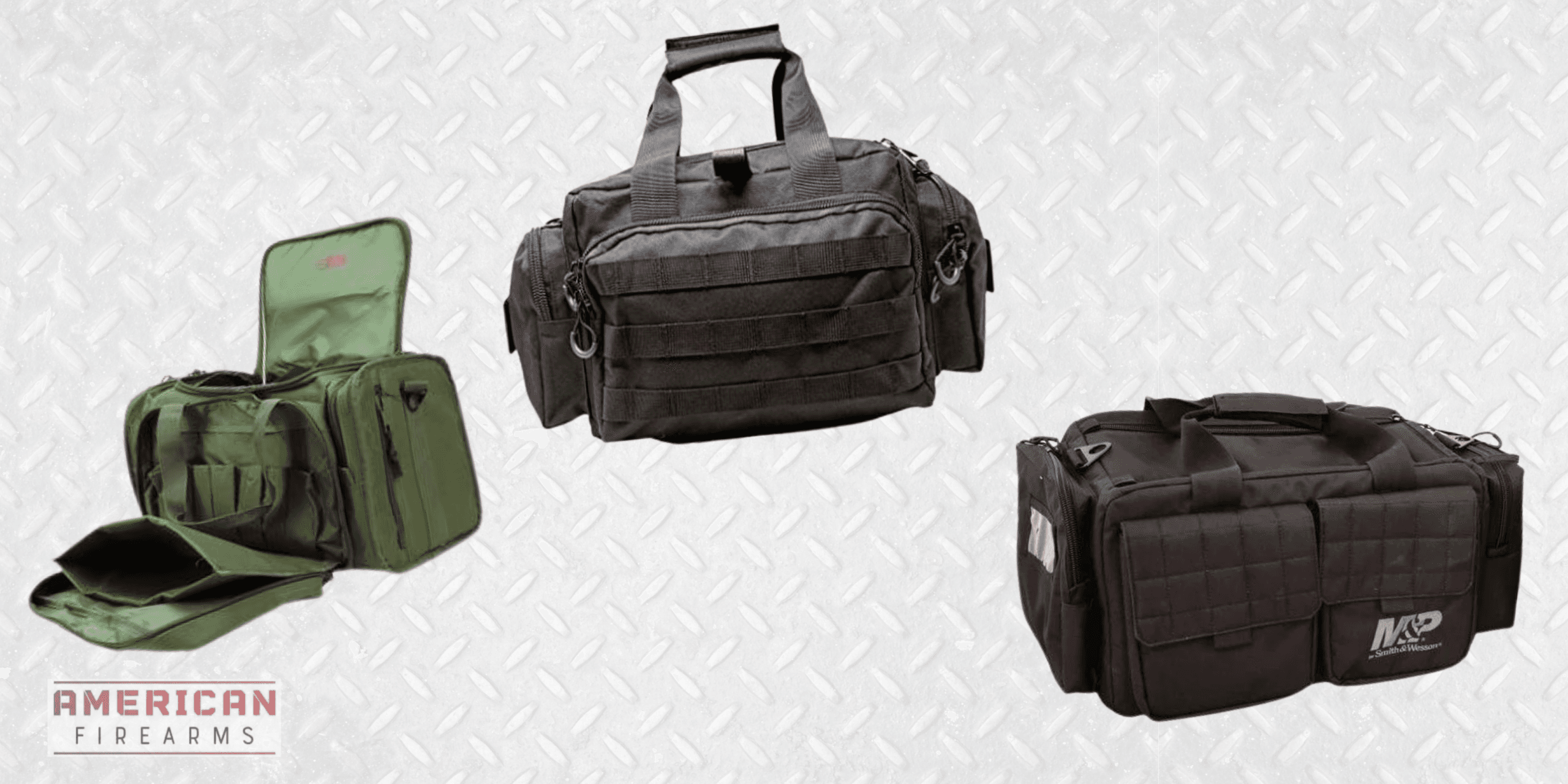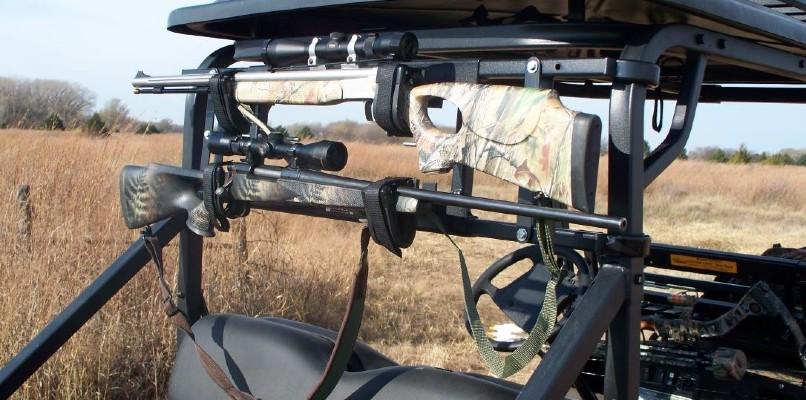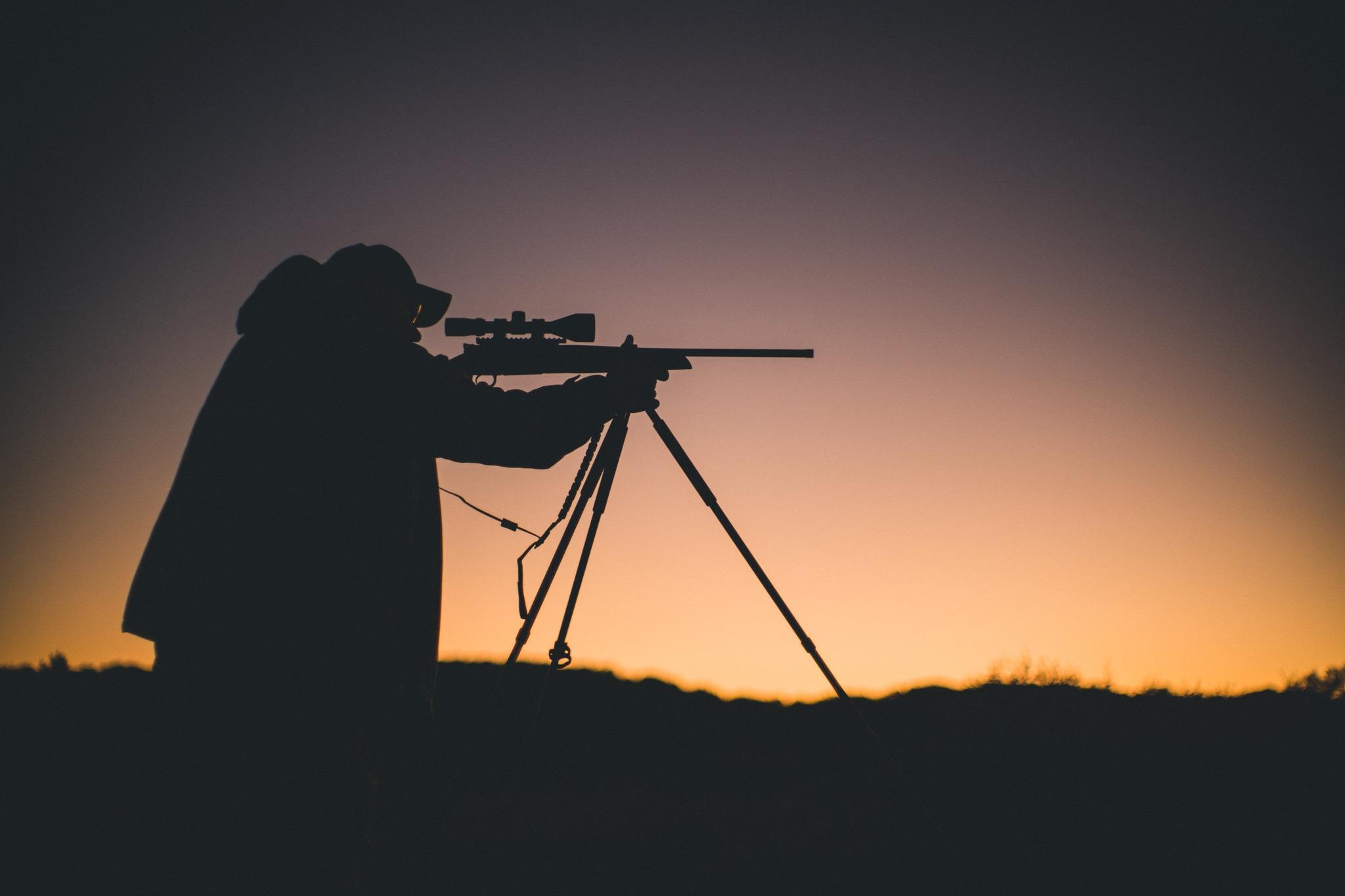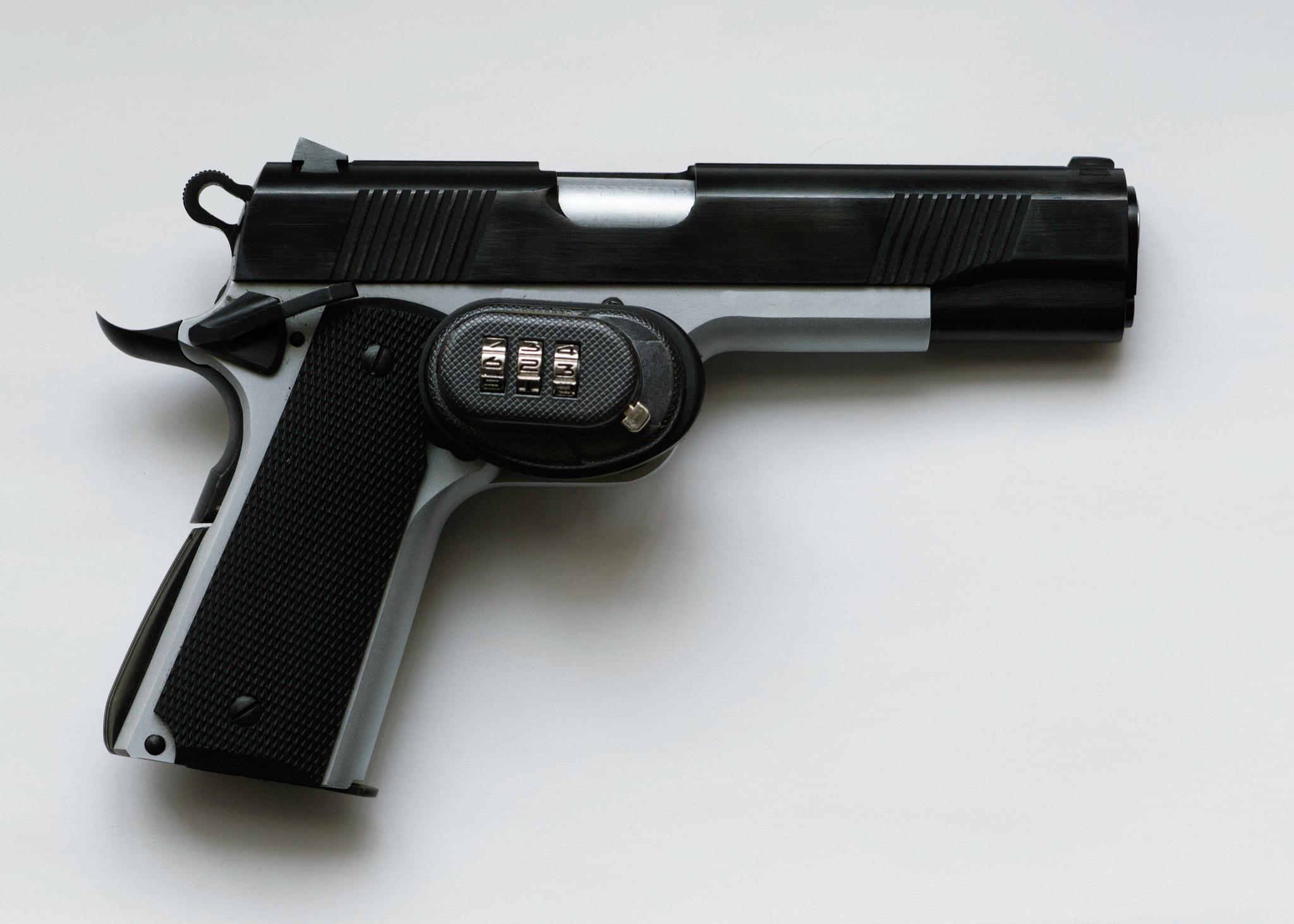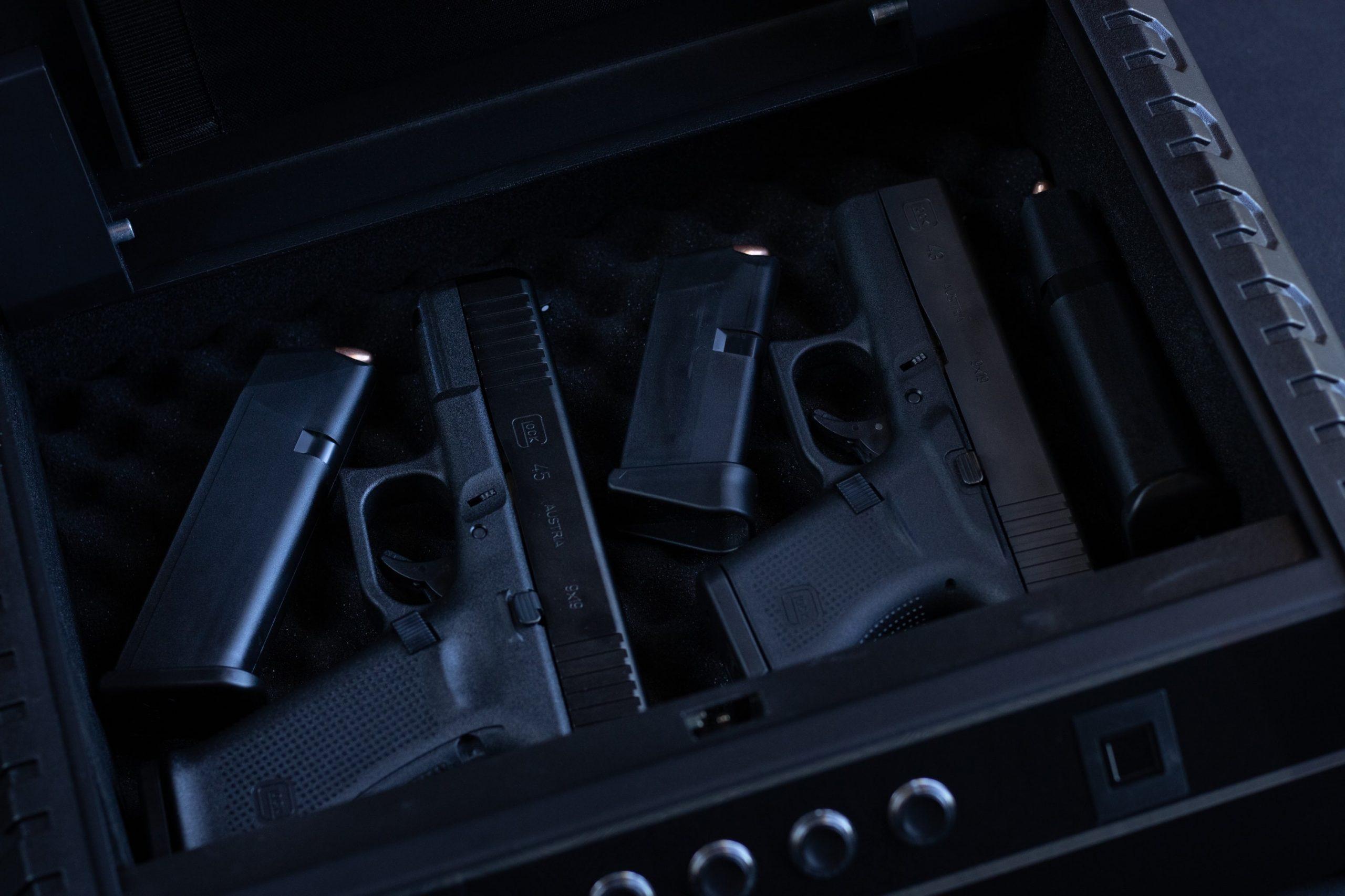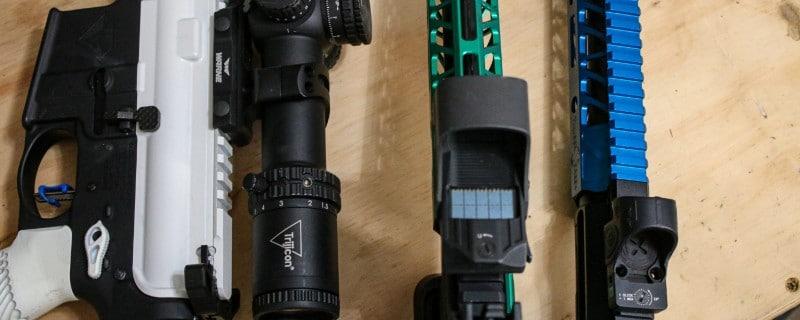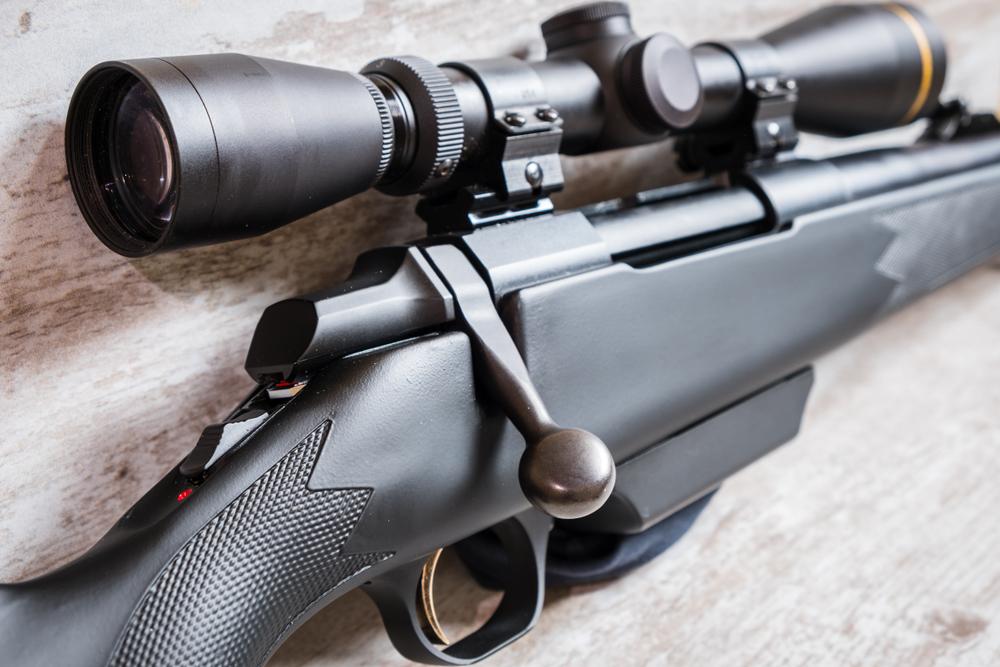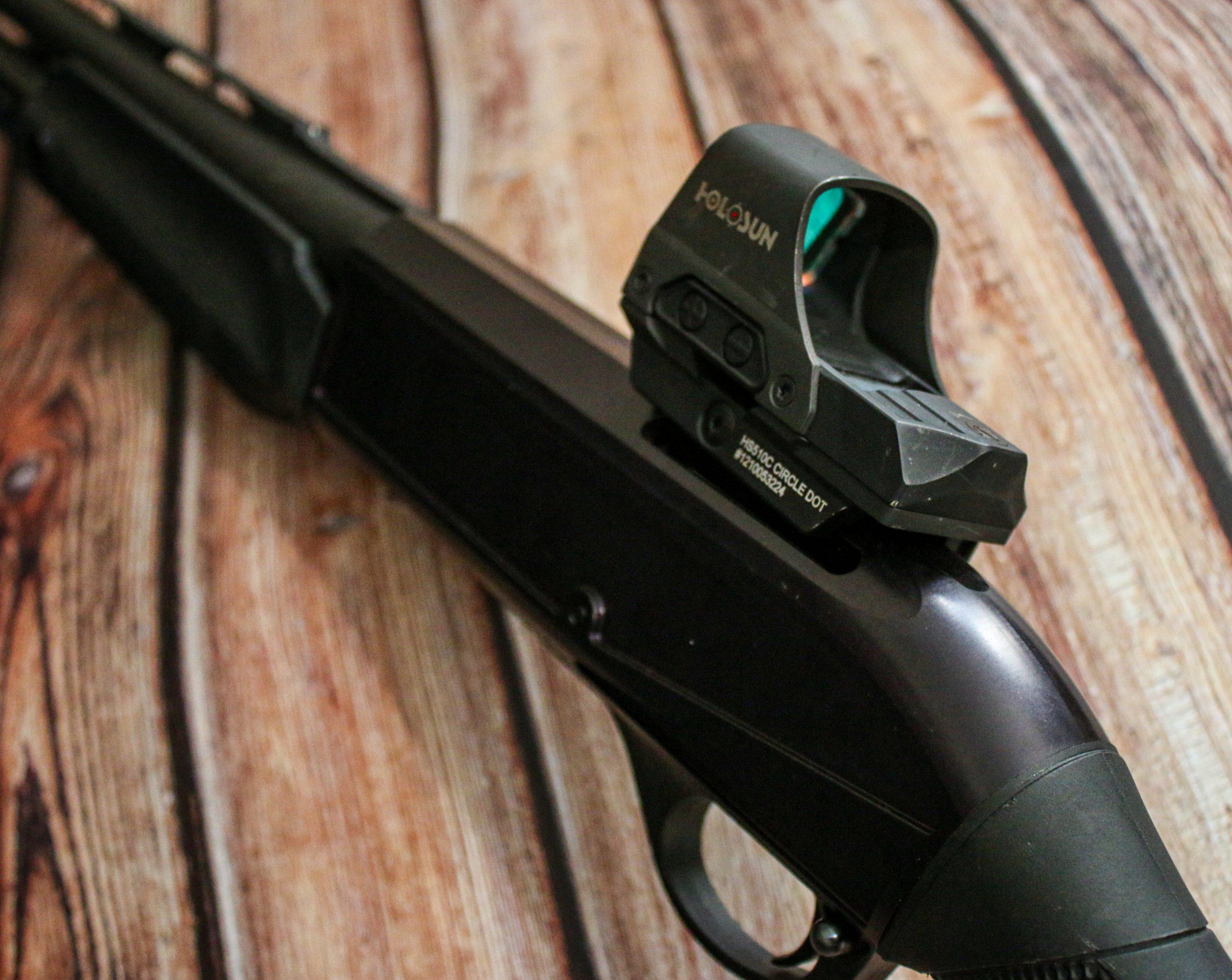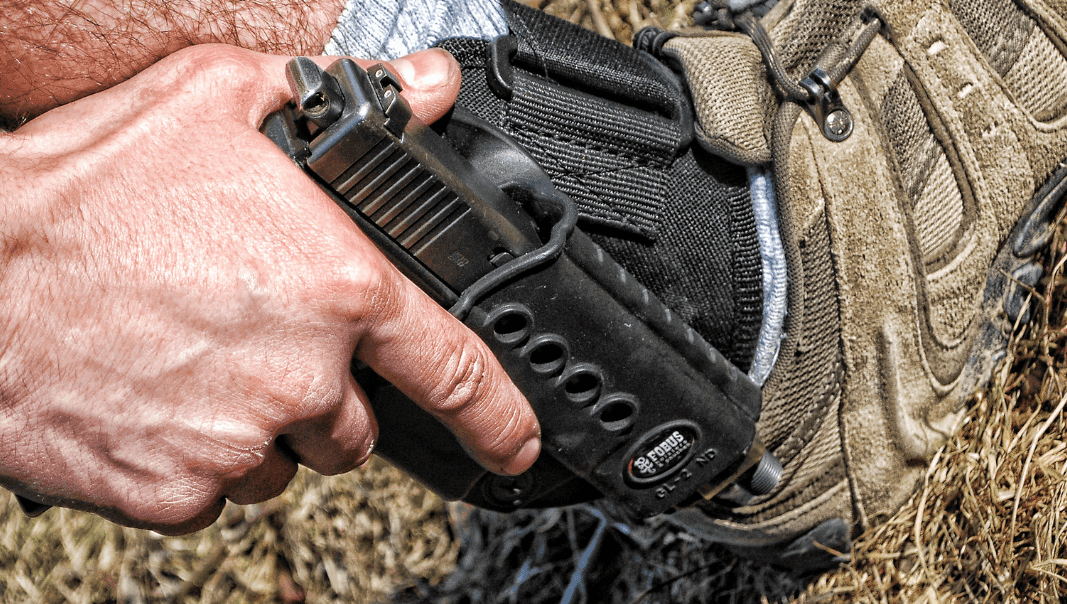SIG M400 Review: A Duty-Grade AR That Won’t Break the Bank
The SIG's M400 SDI XSeries is an AR-15 that's near perfect for most shooters. It's easy to use, accurate, and reliable. Check out how it performed in our tests!
Written By
Michael Crites
Licensed Concealed Carry Holder
Reviewed by
Editorial Team
Learn About The Editorial Team
Share:
Products are selected by our editors. We may earn a commission on purchases from a link. How we select gear.
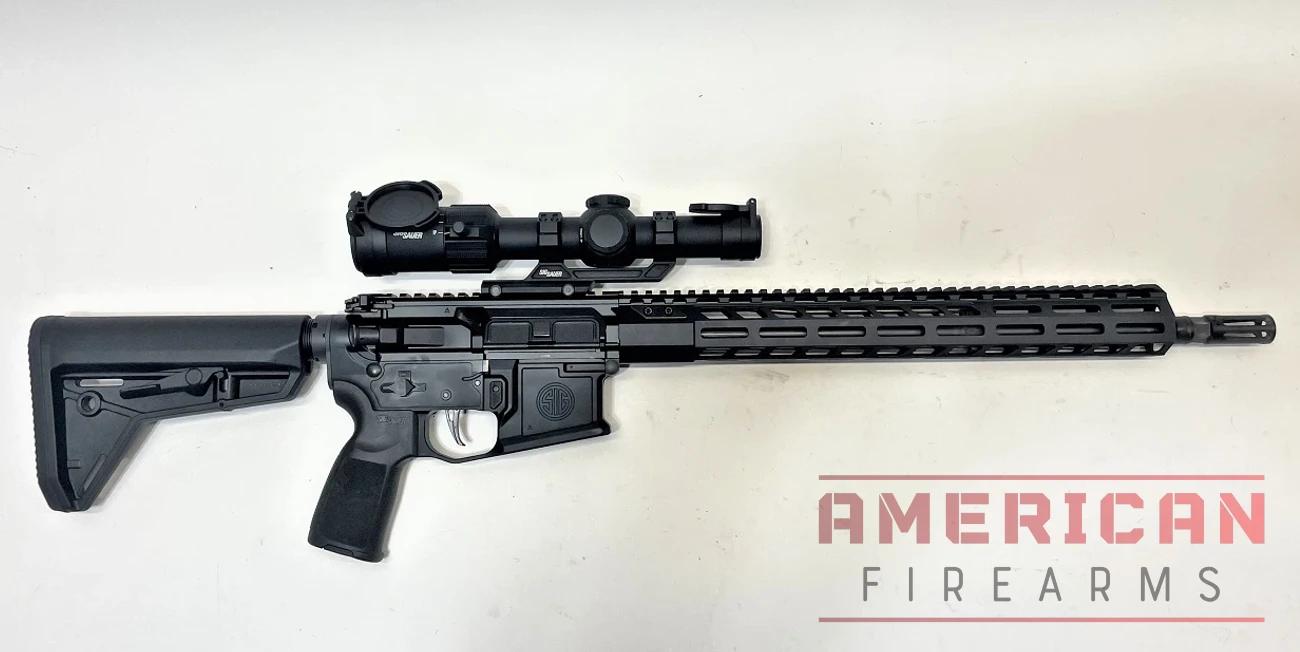
Updated
Nov 2023
The SIG M400 is a popular AR-15 rifle (and one of our favorites) that is known for its accuracy, reliability, and value. It is a great choice for both beginners and experienced shooters. The SIG Sauer M400-SDI XSeries is one of the latest iterations of Sig’s line of AR-style rifles.
Utilizing some advancements and upgrades from other popular designs that Sig has recently released, this M400 is one of the most modern and feature-rich AR-15s right out of the box.
Any gun owner, whether new to the scene or a seasoned vet, knows that ARs are some of the most popular firearms on the market. It can be difficult to navigate your way through an AR purchase, sifting through hundreds of companies and designs. From building to buying a complete rifle, there are many ins and outs to figuring out value, quality, and what design best fits the shooter.
This in-depth M400-SDI XSeries review will highlight the pros and cons of a rifle that is produced by one of the largest and most trusted brands in the world.
In This Article
Overall Score
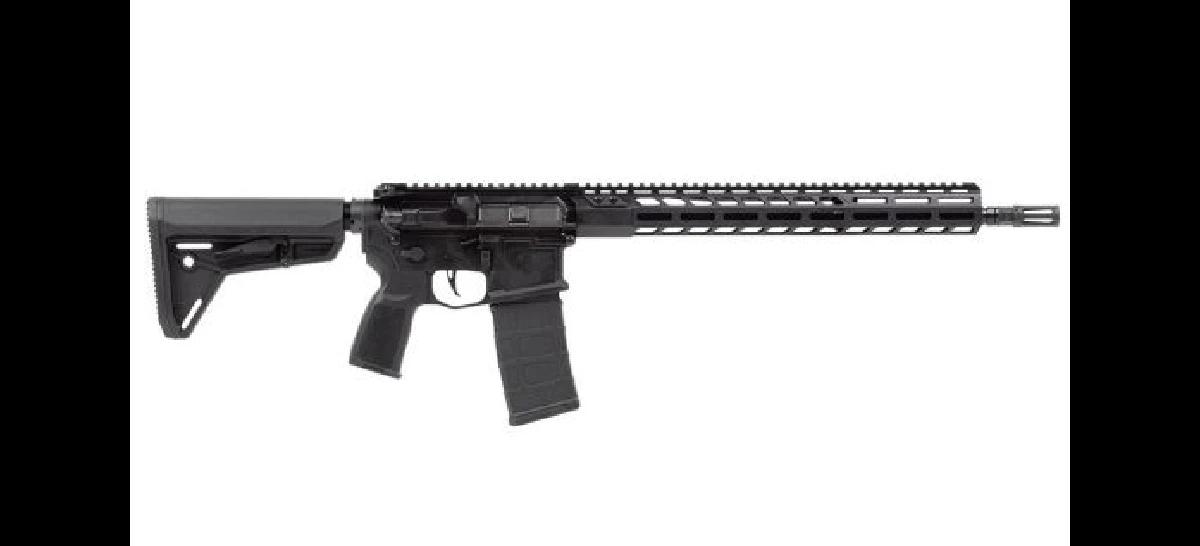
$1023.99

53
EXCEPTIONAL
2025 Awards & Rankings
Performance Scores
Best For
- Combines the ergonomics of a tactical AR with the accuracy of a high-end competition rifle
- Quick and accurate performance
- Well-thought-out ambidextrous features
- Competitive price compared to similar rifles in the market
Considerations
- Lack of integrated sling attachment slots
- The complicated flash hider/compensator combo doesn’t excel in either function
- The shorter three-prong Tread design muzzle device is probably a better product
Our Verdict
SIG is basically on an American relaunch of a classic European-built brand. With the relaunch having so much success with the military and police, it is important the success can translate to the civilian market.
As the AR is so prevalent, there is a misconception that it is an easy firearm to manufacture. There are so many forgettable and low-quality ARs sitting on gun racks around America. SIG is doing an outstanding job setting itself apart with designs like the M400 SDI XSeries.
It is not just the M400 SDI design though; it is important to see a company take the feedback that they get from users and continue to develop and evolve a brand. Looking at the M400 line as a whole, it is obvious that Sig is dedicated to working on improving the lines of products that are available.
This specific rifle is a great AR that could easily fit a first-time AR user as comfortably as a seasoned shooting veteran. I plan on giving this rifle the upgrade and adding it to the list of firearms that I can trust my life with.
Test Scores
How does Sig’s M400 SDI stack up on our 60-point scale? Here are the scores:
Accuracy: 9/10
The Sig M400 offers impressive accuracy, with consistent groupings at 100 yards even with a 1X LPVO, making it suitable for practically any shooting application with the exception of extreme long-range work.
Ergonomics: 9/10
The rifle’s ambidextrous controls, an easy-to-use charging handle, and a comfortable grip make it comfortable and easy for anyone to use.
Fit and Finish: 8/10
It’s a SIG-quality firearm, and the black anodized aluminum construction provides durability and a sleek appearance without diverging far from the standard Black Rifle look.
Features: 9/10
The inclusion of the mid-length gas system, adjustable Magpul SL Stock, flared magwell, and a 2-Stage Matchlite Trigger, make the M400 decidedly feature-rich out of the box.
Reliability: 9/10
It runs all day. I had no funny stories or malfunctions after 2,000 rounds, and believe the rifle is suitable for duty use.
Value: 9/10
Considering the premium features, fantastic build quality, and price point, the Sig M400 is an excellent value for money.
Specifications
Caliber: | 5.56 NATO / .223 Rem |
Barrel Length: | 16 inches |
Overall Length: | Adjustable 33.5 - 35.75 inches |
Weight: | Around 7 pounds (without magazine) |
Action: | Semi-automatic direct impingement |
Capacity: | Standard 30-round magazine (varies by state laws) |
Stock Type: | Magpul SL |
Data from SIG |
History and Background
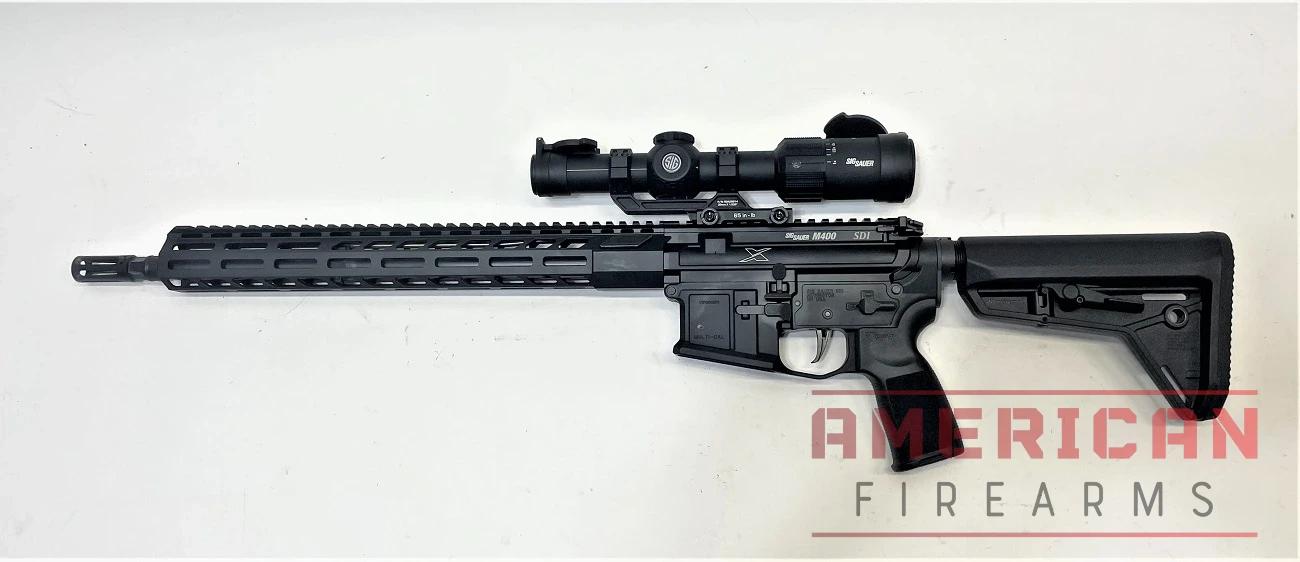
SIG Sauer has long been known as a German firearm company, with successful factories in both the United States and Europe. However, in 2020, after some court fines were imposed due to the strict export laws that Germany imposes on their firearm manufacturers, the German branch of SIG Sauer closed permanently.
While SIG had been operating a factory in the U.S. for years before 2020, the close of European operations placed the weight of the company entirely on U.S. manufacturing. This rang in a new era for Sig, becoming an American-made and based brand.
SIG has made headlines recently, as they have secured several different major U.S. Military contracts, including the new service pistol, combat rifle, and light infantry support weapon system.
With a trusted track record of service around the world, there is an expectation for quality and performance that sits with products that bear the Sig Sauer name.
The selection of SIG for these contracts also brings a heavy burden to bear, making the expectation grow, as there would be major criticism of any shortcomings in the brand that is innovating into the U.S. Armed Forces.
A major focus of the company is on quality and innovation in their civilian firearm lines, as any American gun company knows the importance of success with the domestic civilian market.
The SIG Sauer M400 line of AR-style rifles was introduced in 2010 and has seen many different iterations and variants through its relatively short life on the market.
AR-15s are one of the most popular firearms on the American market, being used for everything from recreational shooting to a home defense rifle, to hunting. With that being said, the production of a quality AR-15 fits perfectly with the newfound American identity that SIG Sauer has established.
With success with AR-like rifles, such as the MCX, a standard AR should be an easy layup for the company that is already pushing the boundary of the standard design.
The first few models of the M400 were very plain, mil-spec style ARs that mimic the military M4 aesthetic. They featured carbine-length gas systems, fixed front sight bases, and drop-in quad rails. The vanilla M4 aesthetic limits the user in customization and rail space and has also been done to death on the civilian market.
In 2018, SIG released the M400 Tread series, a line of entry-level ARs that had more modern features and aesthetics, all centered around affordability, easy customization, and the importance of the cultural concept of American firearm ownership. The Tread’s further innovation in the M400 line and the AR platform in general brought a budget design perfect for rifle shooting that is a great entry-level rifle for most gun owners right out of the box.
Following the success of the Tread line, SIG then looked to build a performance AR that would be centered mainly around competition shooting. Working with Daniel Horner, a SIG-sponsored competitive shooter, the SIG M400-DH3 was born. Low recoil, fast follow-up shots, and a fast handling design are the key defining features of the DH3.
So here is this high-level performing rifle, built off of this common and affordable rifle line, but this goofy-looking competition-based furniture and features both limit the marketing capabilities of the rifle. Sig did the only logical thing and married the two designs together, competition performance in a common tactical design. Thus, the SIG M400-SDI XSeries was born.
Key Features
Barrel & Gas System
The SIG Sauer M400-SDI XSeries is a 16-inch barrel AR that is chambered in 5.56 NATO with a 1:7 twist and is built for tactical shooting applications.
The rifle features a mid-length direct gas impingement system, which is a major upgrade from most of the companies that pair up carbine-length gas systems with 16-inch barrels. The mid-length eliminates overtravel past the gas block, reducing the wear and felt recoil impulse of the rifle.

Controls
In utilizing the same lower from the DH3 competition concept, the SDI features truly ambidextrous controls on the lower. With an ambidextrous mag release, an oversized bolt release on the left side of the rifle, a second bolt release on the right side of the rifle, and ambidextrous safety, user accessibility is maximized, and the placements are smart — none of the controls get in the way of manipulations or my trigger finger.
While ambidexterity is not unique to SIG, I will say that the placement of the bolt catch on the right side of the gun is thoughtfully designed and makes magazine changes faster for both right and left-handed shooters.
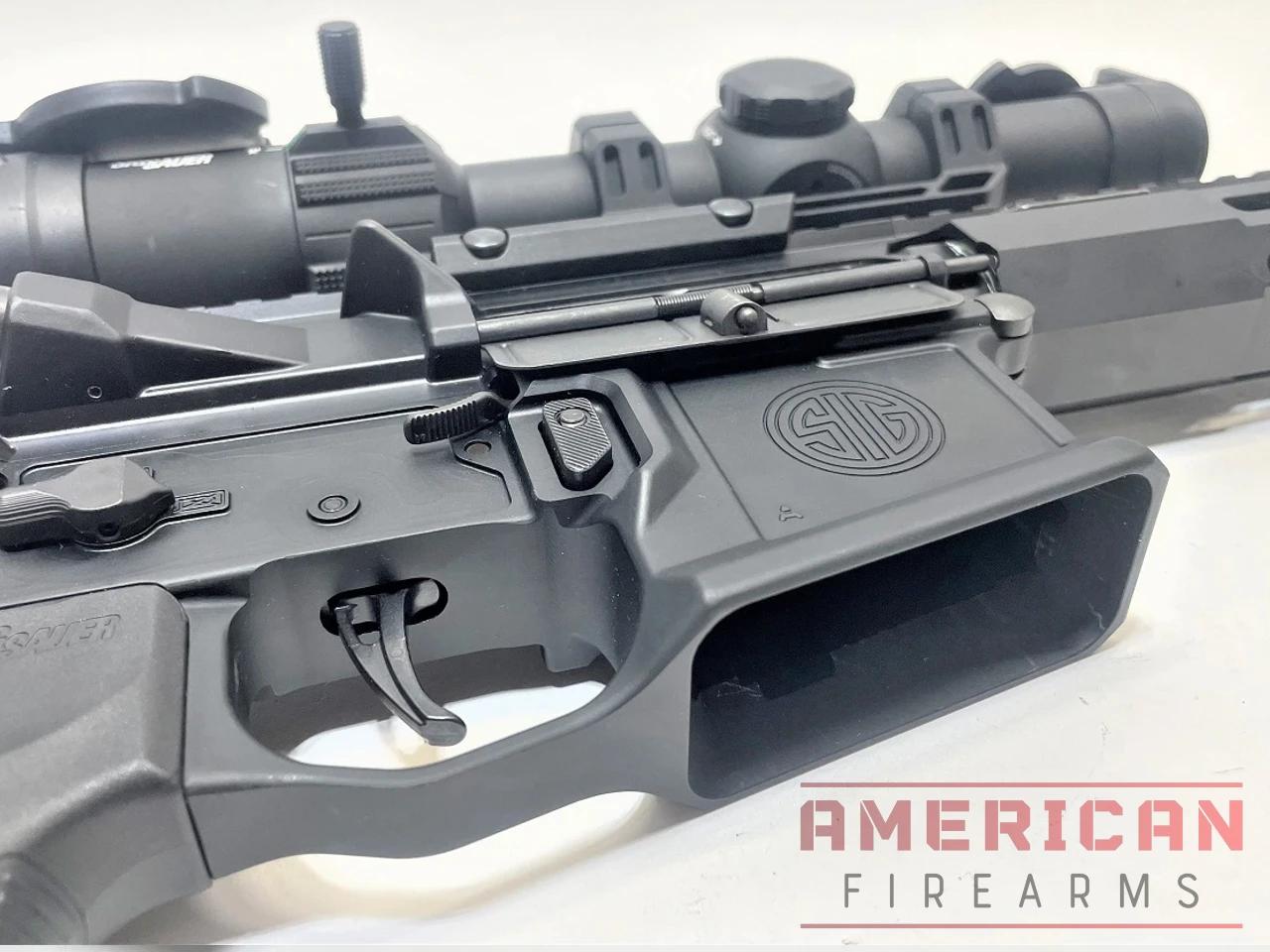
The ambi charging handle includes release latch designs on both sides. The rifle utilizes a standard bolt carrier group with a nitride coating, and there was no discernible difference between the SDI and the Tread series.
The standard AR buffer tube is equipped with an adjustable Magpul SL Stock, giving it a sleek feel with a rear QD attachment point, another feature that was retained from the Tread.
The flared magwell is a competition-driven feature that was included. This design opts for easier magazine location when reloading under stressful conditions or time-constrained circumstances.

Grip & Trigger
One of the most important aspects of any firearm is the trigger, and SIG did not cheap out on that key feature at all. Not to say that mil-spec triggers are of poor performance, but they can have a heavy trigger pull relative to nicer triggers, making this an aspect of the platform that is commonly upgraded.
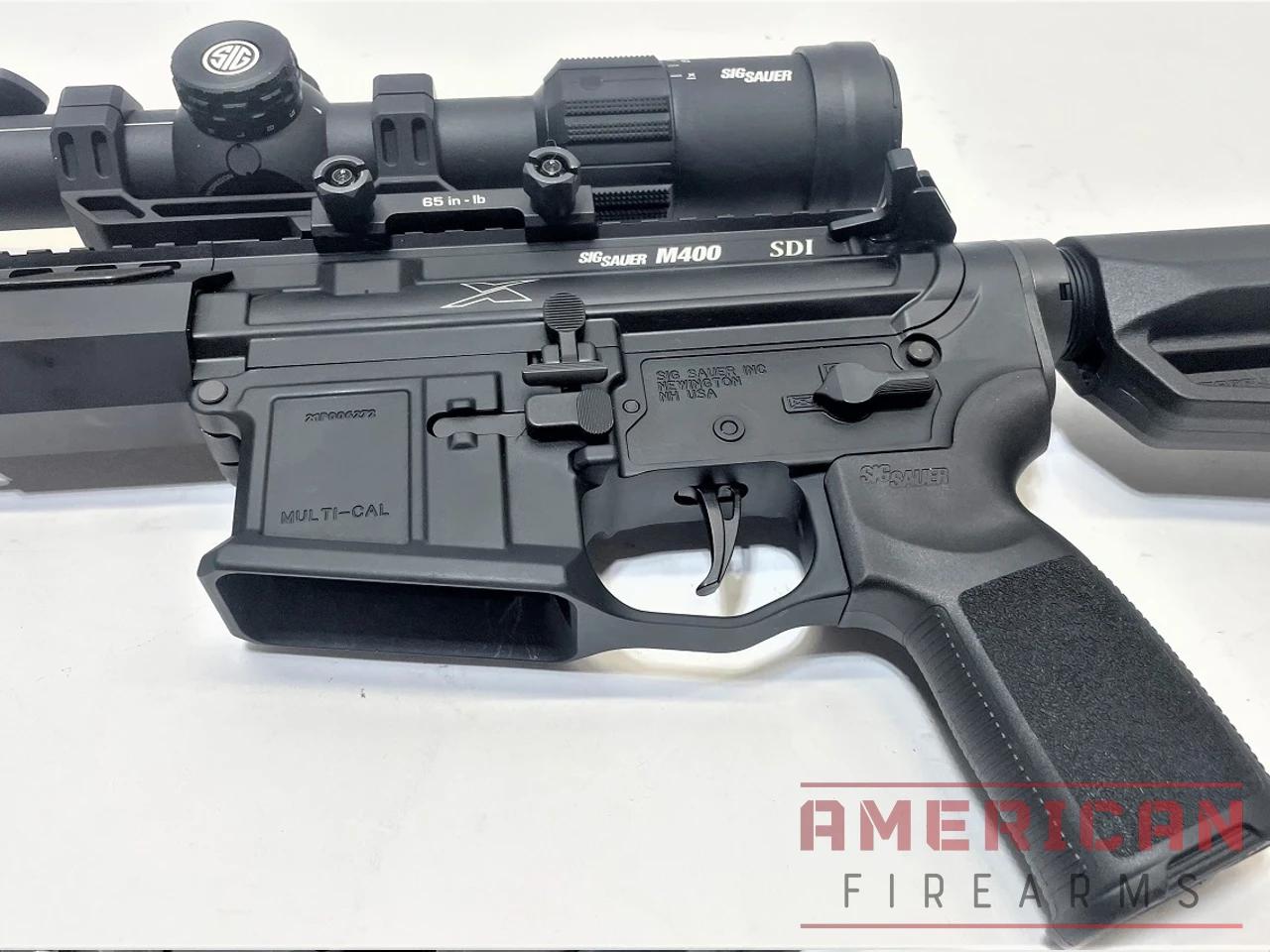
While the DH3 is a slightly lighter trigger, this SDI features a 2-Stage Matchlite Trigger that has an advertised 5-pound break, although I believe it to be closer to 3.5 pounds. With a straight contour, with a slight curve at the end, the ergonomics and incredibly short reset give way to quick and accurate follow-up shots. It’s a smooth trigger that’s a welcome upgrade.
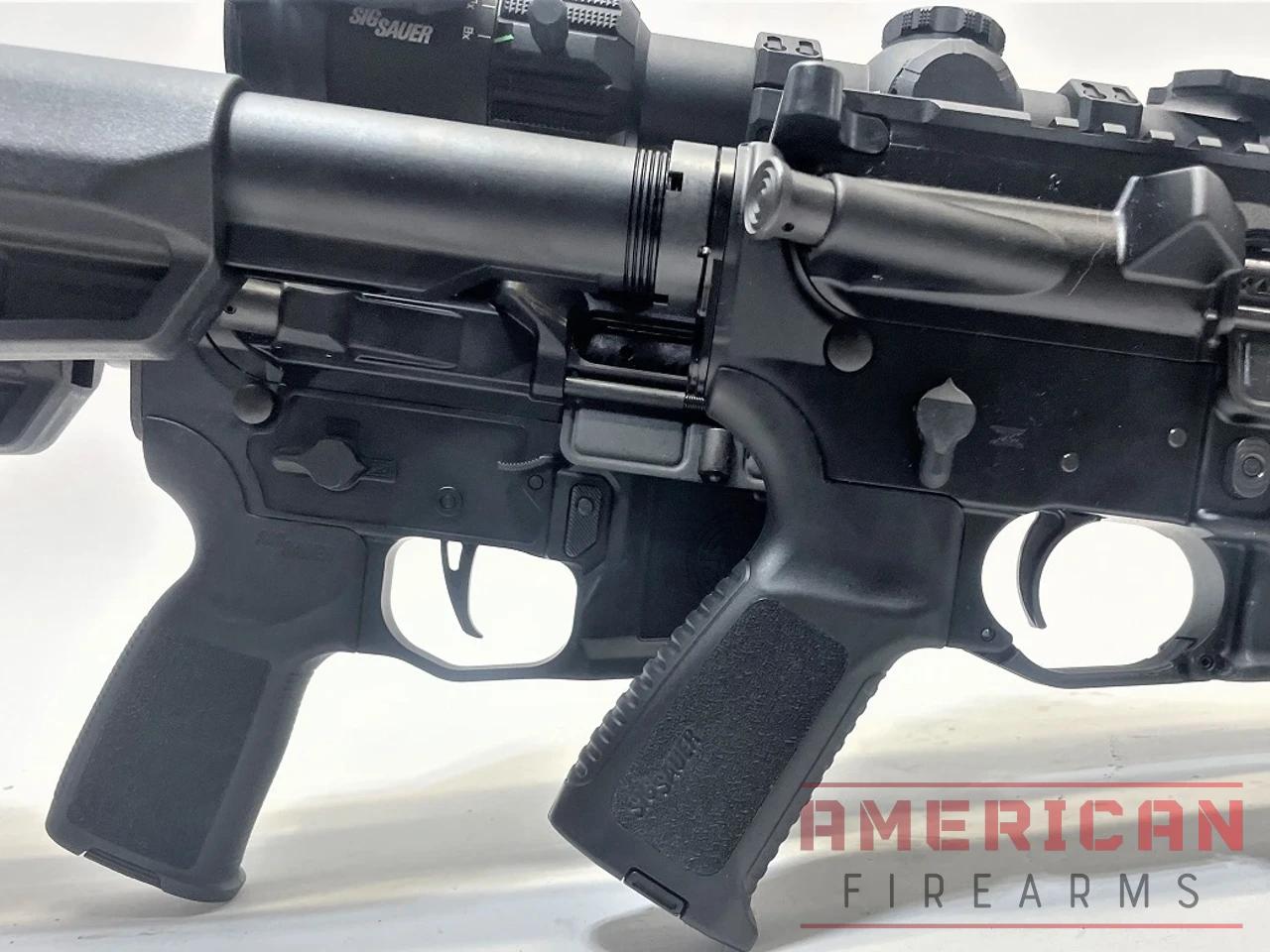
The XSeries part of the rifle mimics the pistol grip contour of the handguns that fall under the same name. Almost like a P365 handgun grip, this rifle has a proprietary pistol grip that has an improved angle over standard AR furniture. The texturing on the grip is tactile, yet sleek enough that it does not run the user raw.
Handguard
The front of the rifle is slim and sleek, making use of a free-floated, M-Lok slotted handguard that extends to the threads of the barrel. While the Tread did have the option for a similar handguard, the standard original handguard lacked the M-Lok space closest to the receiver. The muzzle device is a compensating flash hider, featuring compensations holes at the front, with an extended birdcage design to minimize flash. I’m not a big fan of this design, but more on that in a minute.
Build Quality and Durability
Considering the reputation of SIG Sauer, the build quality of the rifle should be put to the test. Now I have only run about 2,000 rounds through the rifle, which I consider to be about 3,000 rounds short of a durability test. With that being said, the AR seems to be holding up very well, with expected wear patterns on the parts.
I do not believe in lubing or cleaning a firearm that is new out of the box, as I expect a company to put its best foot forward and build a quality machine that is ready to work. With that in mind, there have been zero malfunctions on the rifle since I started shooting, so I believe the track record stands strong.
I am not very easy on my rifles, especially if I am putting them through the paces to see how they will hold up. This rifle has been dropped, thrown, and left in the cold snow for hours. So far, this rifle has stood up well to what I would expect out of a duty-use candidate, with upper and lower receivers still in good shape despite my efforts.
The SIG M400 series is made from aluminum alloys, with barrel material a chrome and moly steel blend. The rifle is black anodized, including the barrel, something that the stainless-steel barrel Tread does not include.
A typical AR-15 that is chambered in 5.56 should see a lifetime of around 20,000 rounds through the barrel. I would expect this rifle to hold up well to that standard, maybe even pushing that number slightly north.
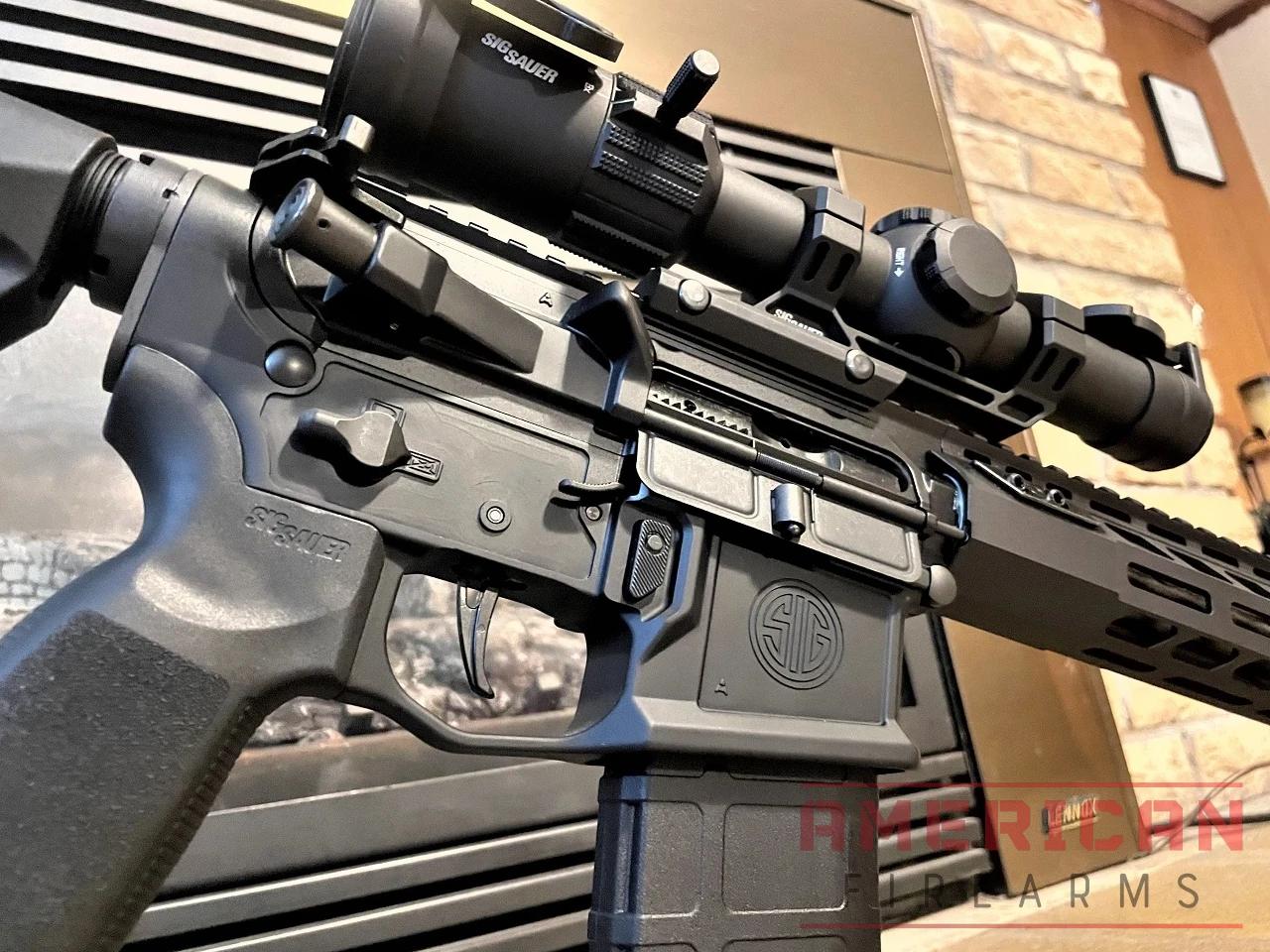
Performance and Accuracy
I am a big believer that outside of some very talented people on the planet, most firearms are capable of far greater feats of accuracy than the person wielding them. The SIG M400 SDI is keeping up with that track record.
While I am no benchrest shooter, and I am nothing to write home about as far as talent, I do engage a fair bit of tactical shooting. From accuracy, speed, and ergonomics, this platform has proven to be a reputable tool.
Of the 2000 rounds that I put through the SDI, I mostly used Buffalo Bore 55-grain 5.56 and PMC 55-grain .223 Rem.
As far as duty ammo, I would always recommend heavy-grain weights with a rifle that has a 1:7 twist rate. To make sure the rifle could hold up, I ran some Australian Outback 75-grain Sierra Matchking boat tail hollow point .223 Rem ammo which ran with no issue.
Bullet weights are one of the most overlooked aspects of the AR. Pairing the proper weight with the proper twist rate is important. With a 1:7 twist, 62+ is the grain weight that you should be looking toward.
In testing the accuracy, I took five shots standing at 100 yards, utilizing the 1X magnification on the Sig Sauer Tango LPVO. The groupings were around 2-3 MOA, perfectly acceptable for my applications, and I am sure with a better shooter involved, far from the capability of the rifle itself. The M400 series are impressively accurate rifles with any ammo on board.
Pretty much all of the range time with this rifle heavily involved running shooting drills. The match trigger lends itself to smooth rapid fire and easy follow-up shots and paired with the custom lower receiver, the combo is perfect for quick magazine changes. The furniture is comfortable, and the recoil impulse is easily controllable, although that should be a given with a 5.56 rifle.
Overall, shooting this rifle was an absolute pleasure. It is ergonomic, easy to use, intuitive, and well-built. This is a flat shooting rifle, and thanks to the polished fire control group, it is so easy to rip off quick shots, transition targets, and make effective hits. From just shooting targets for fun to tactical application drills, the Sig was a strong competitor.
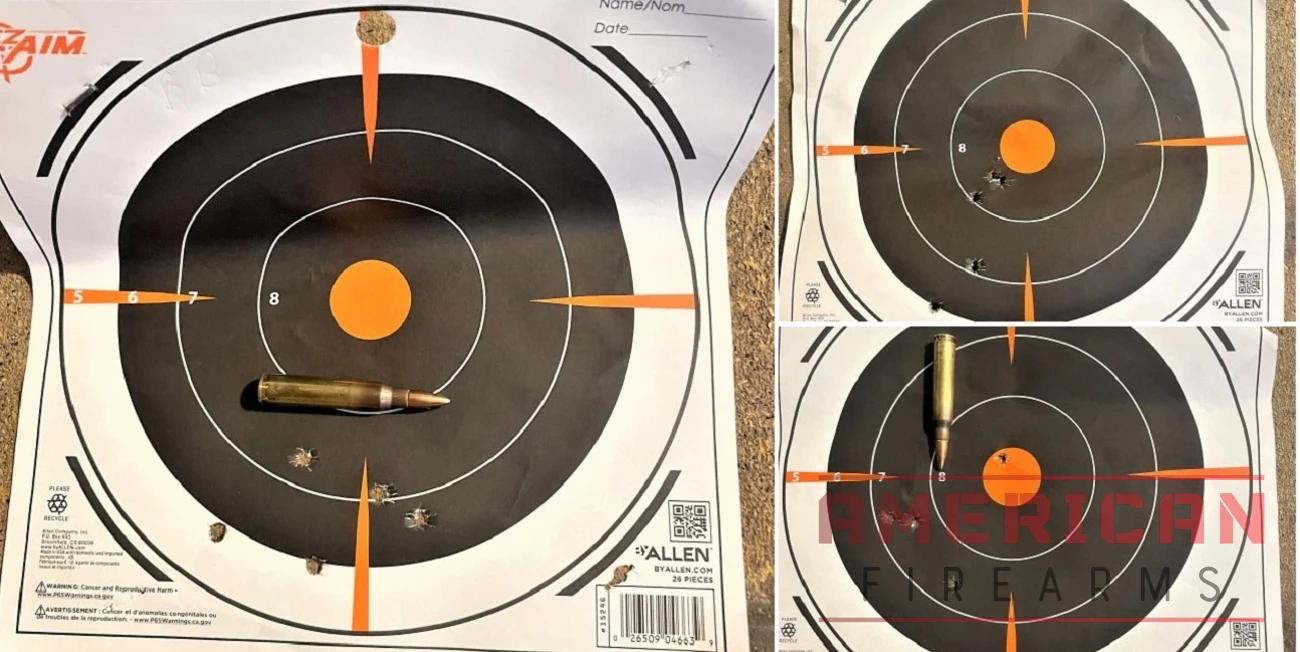
Customization and Upgrades
The AR platform has been long known for its easily customized design. This rings even more true in the modern age, as the rifle has further evolved along with the plethora of attachments on the market.
The rifle opens itself up to endless possibilities with the M-Lok handguard, as anything from foregrips to IR laser units could be added to the attachment slots.
The trigger is a standard AR trigger design, the pistol grip has a standard one-screw attachment, and the charging handle is the standard size. The utilization of standard dimensions in the major parts opens the upgrades to pretty much anything on the market.
Aftermarket upgrades are ever so increasing; however, I like the thought that SIG put into the trigger, furniture, and charging handle, giving the rifle a premium feel right out of the box. But, maybe you love Geissele or Timney? No matter, the lower is ready for any match drop-in unit.
In testing, I only ran a SIG Sauer Tango-MSR LPVO 1-8x24mm scope and a sling, giving it a simple feel. Now that I have built up some faith in this rifle, it will get the standard duty upgrade that includes a light with pressure switch, upgraded sling mounts, and a BCM Gunfighter vertical grip run backward.
This rifle is practically begging for a can, and the standard 1/2×28 pitch thread makes that an easy accomplishment. With all of the QD muzzle devices on the market, there is a great opportunity to add some quiet fun time, while not having to worry about bare threads while unsuppressed shooting.
With the extended M-Lok in the handguard, as opposed to the original Sig Sauer M400 Tread handguard, there is adequate space to turn this into a great tactical rifle with all the bells and whistles. That added customization lends itself to increasing the diversity of use with the platform. So go add some iron sights, a grip, a PEQ box, and anything else that your heart desires.
Another great fact about this design, as it relates specifically to adding accessories, is the lightweight nature of the build. Weighing in at only 7 pounds, you can add so many attachments without further weighing down the construction.
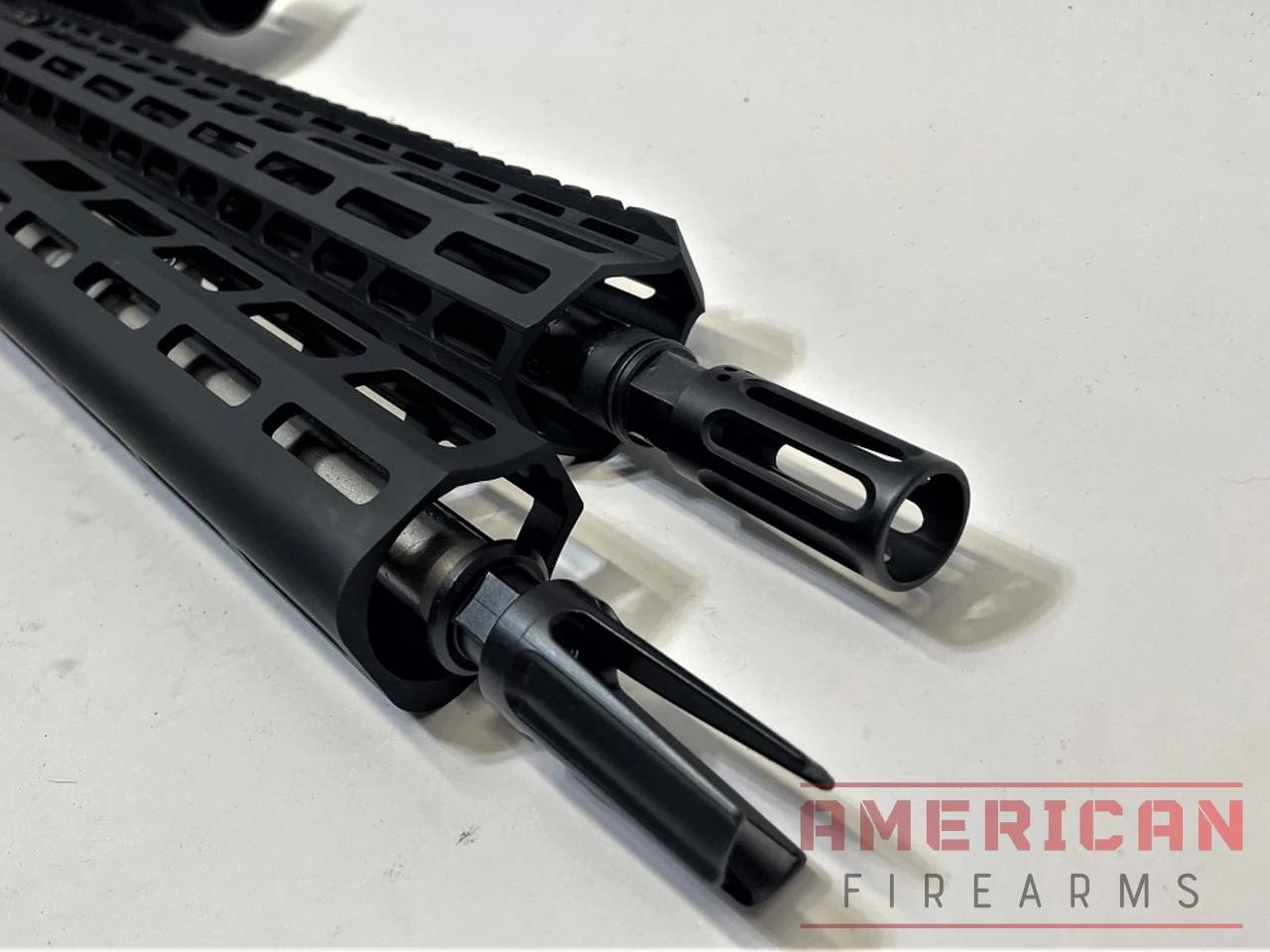
Shortcomings
While the ambidextrous features and enhanced controls from the competition-inspired lower are well thought out, there are no integrated sling attachment slots to be found on either the lower or upper receiver, outside of the one QD slot on the removable buttstock. With the success of the MCX line, it would have made sense to build in some MCX-style QD slots on the receiver and handguard. Yes, they can be easily added, but it seems like a pretty basic thing that should be expected on any tactical rifle that is going to be taken seriously.
My only other complaint is the muzzle device. I don’t think it is a terrible design, and it doesn’t make the rifle muzzle heavy, but I do not care for the flash hider/compensator combo.
Typically, when a part is given two vastly different jobs, it doesn’t do either one of them exceptionally. A tactical 5.56 rifle does not need a compensator, the round is naturally soft recoiling out of a rifle with a mid-length gas system. The muzzle device design is too long, and I prefer the three-prong design on the Tread line.
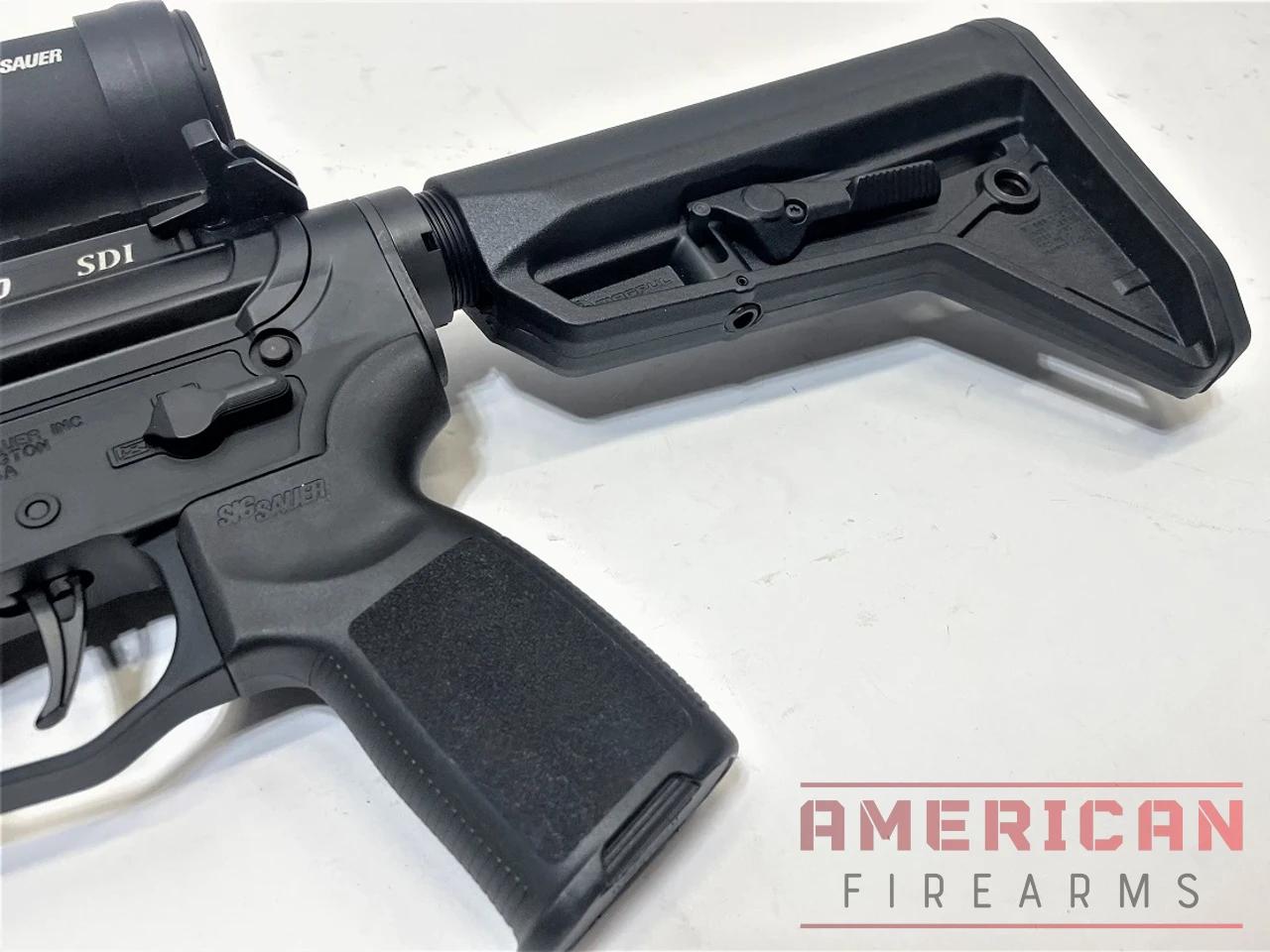
Alternatives
The obvious comparison would first go to the Tread line of M400s; however, I think this rifle far sets itself ahead of that line with just the custom lower on its own. The input that was taken from the competition DH3 took a basic design and pushed it to the next level.
As I said, the AR style is probably the most overdone rifle on the market, meaning you can’t throw a rock far without hitting a competitor.
I see the M400 SDI as a higher-end AR, competing in the same space as Daniel Defense, Wilson Combat, and BCM. Every single one of those companies has an extensive track record and reputation and I think Sig has done a great job in building a rifle that competes at a more affordable price point.
The quality and aesthetic fit very close to the Daniel Defense line of ARs, however, the Sig is cleaner cut and executed with better value. The Daniel Defense rifles are often criticized for some of the design choices like adding rubber padding to the grips and stock. While Sig did use their XSeries AR pistol grip, instead of spending more money designing and producing their own butt stock, they just took an incredibly popular Magpul product and included it in the design. To me, it’s the small things like that which set this apart from something like a Daniel Defense. although I did enjoy my time with their DDM4 V7.
The main point is that the rifle is well thought out. With there being so many options, many companies will slap on useless features just to give themselves a distinctive feel.
Simple is never a bad thing, and for the most part, it feels like each of the components of this M400 was made with purpose, not just to fit a gimmick. That is why I would say this is on the higher end over sitting in the starter rifle category.
Normally, I am always in favor of building an AR, that way you don’t end up throwing away good money on replacing basic parts. The SDI is probably one of the best out-of-the-box rifles that I have ever shot, as I would not change any of the basic features or furniture options that are included in the design.
Price and Value for Money
In the higher-end AR market, the expectation is to spend a pretty penny for an out-of-the-box rifle. That does not include the extra money it will take to replace the furniture that may not live up to the quality of the rifle.
From the store, the M400 SDI XSeries currently comes in at a lower price than almost all of the competitors, and with a match grade trigger, custom ambidextrous design, and great furniture choices, I think very few people will be replacing basic function parts.
Overall, this might be the only rifle that I would buy that is already fully assembled. That is a pretty high standard for me.
FAQs
Is there a difference between a SIG M400 and an M400 tread?
Is the SIG M400 used in the military?
How accurate is a SIG tread M400?
Is a SIG M400 the same as an AR-15?
What is the best range ammo for a SIG M400?
Sign up for our newsletter
Get discounts from top brands and our latest reviews!




